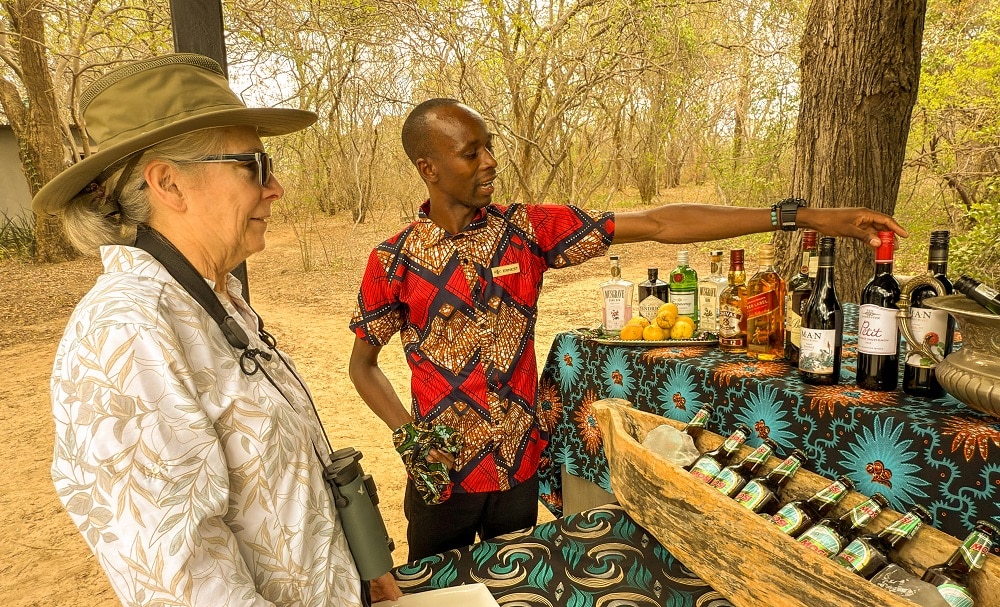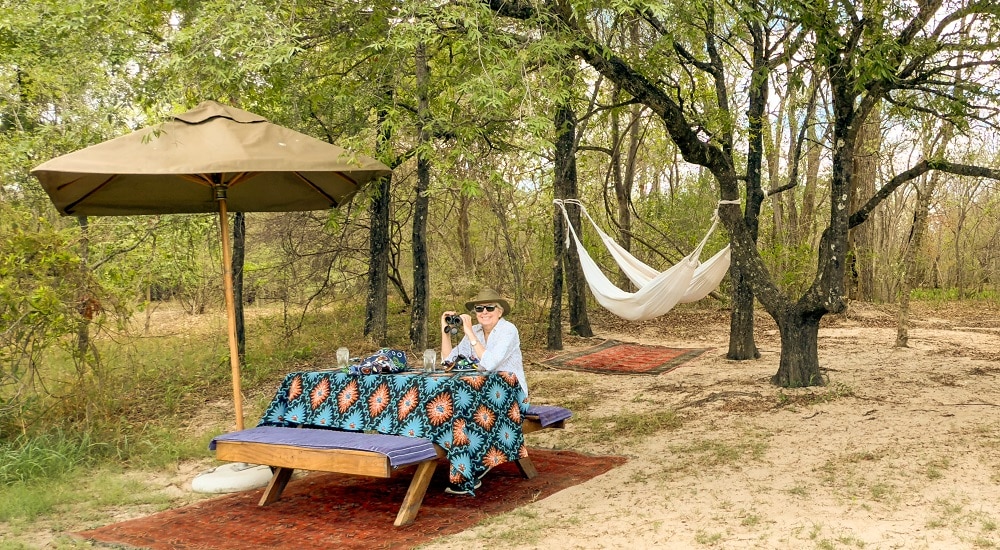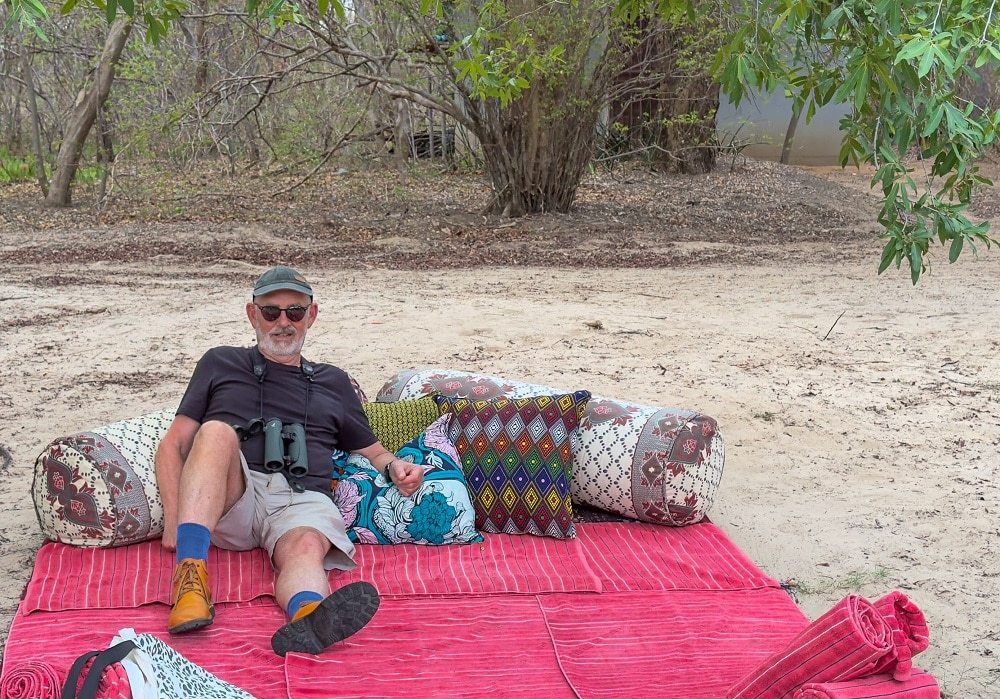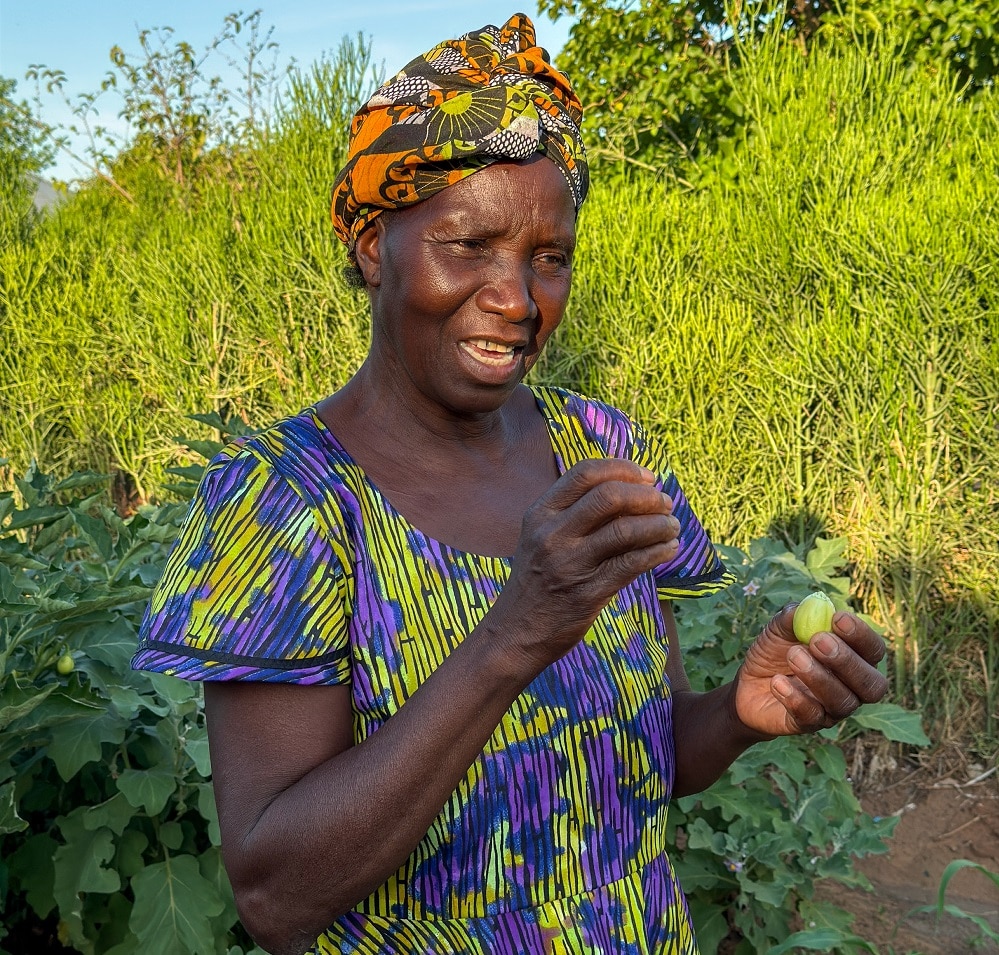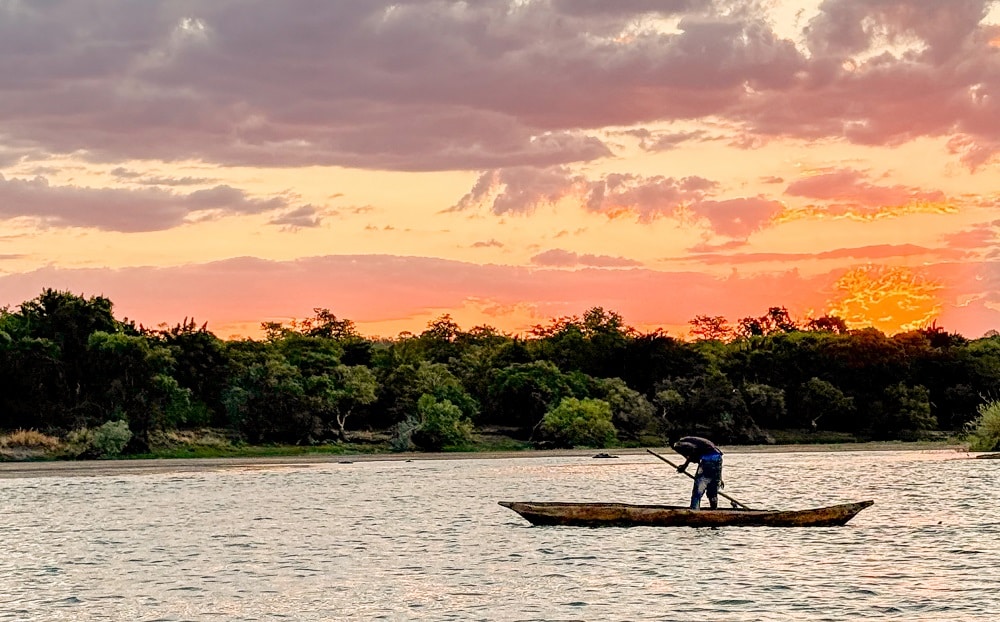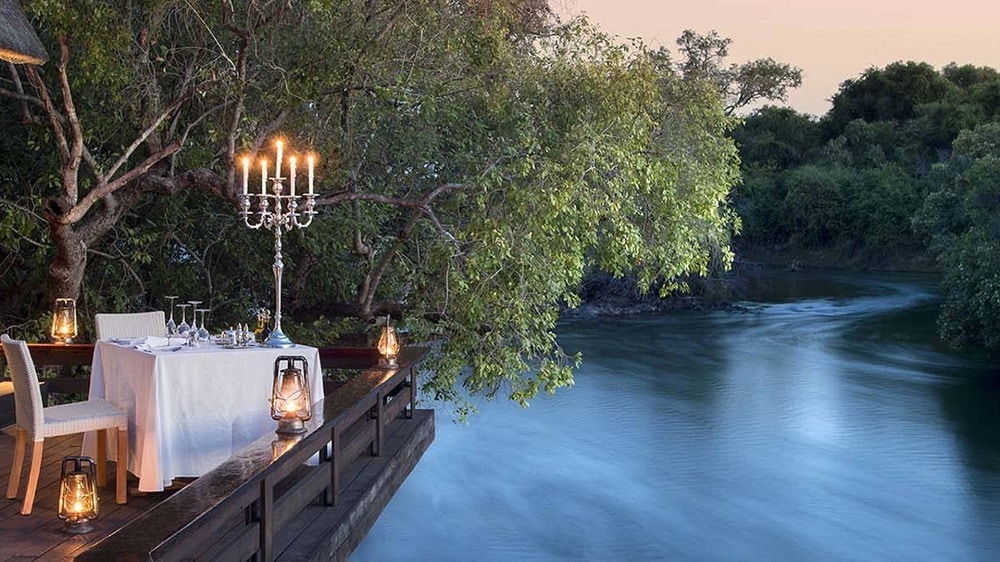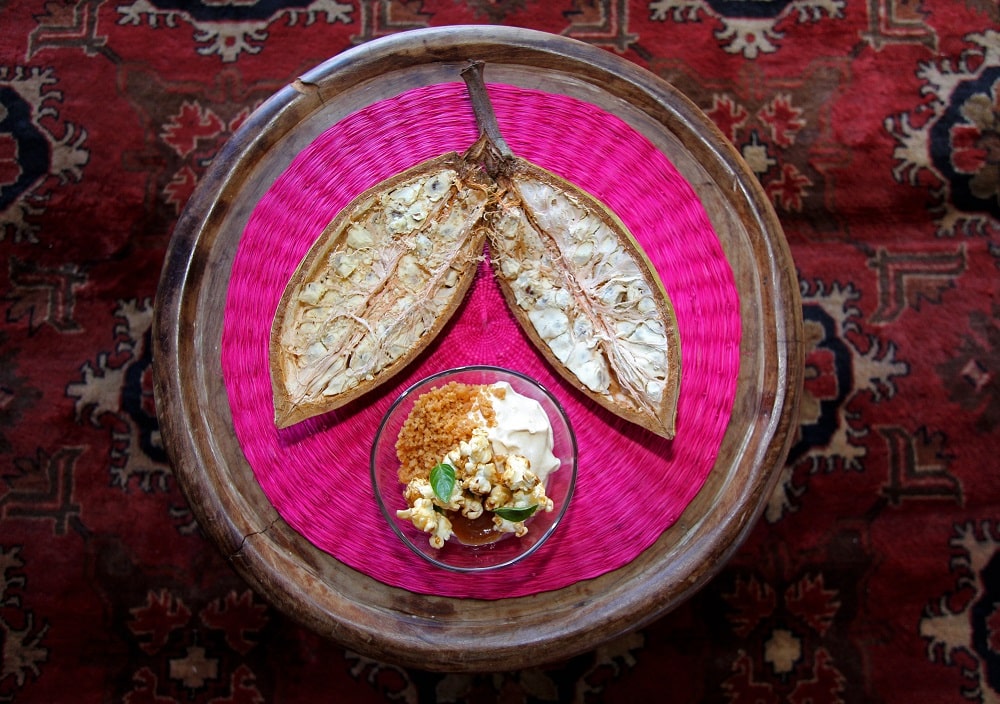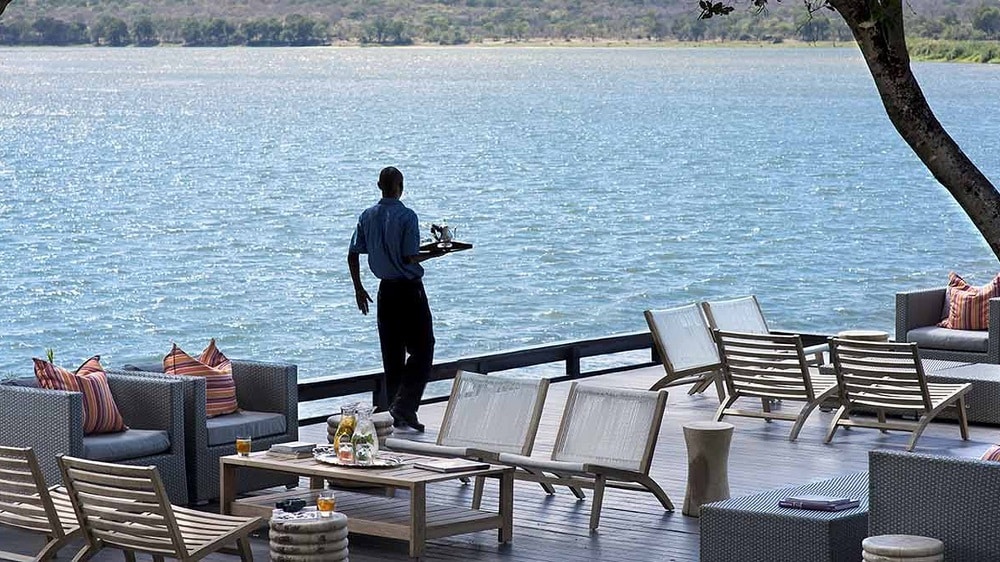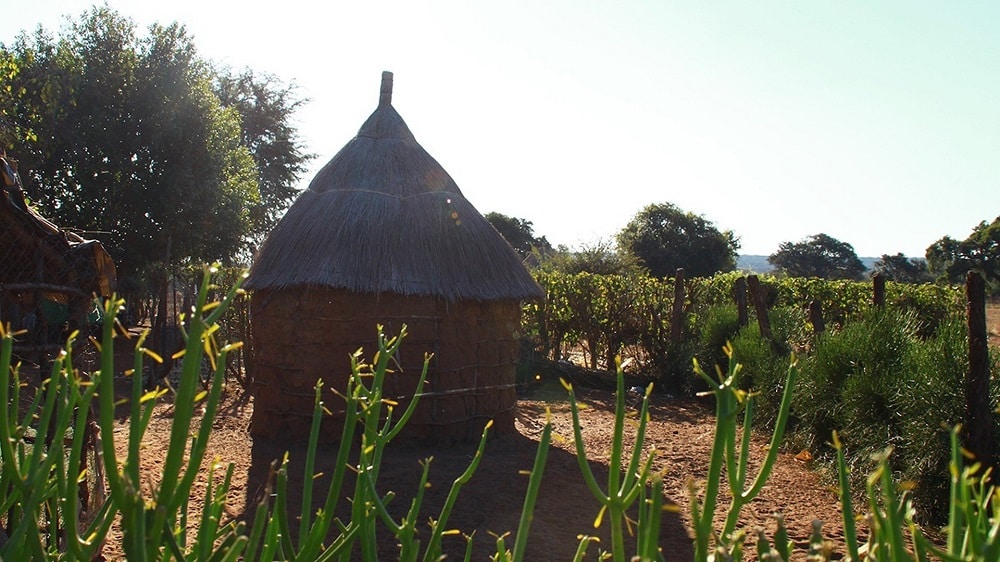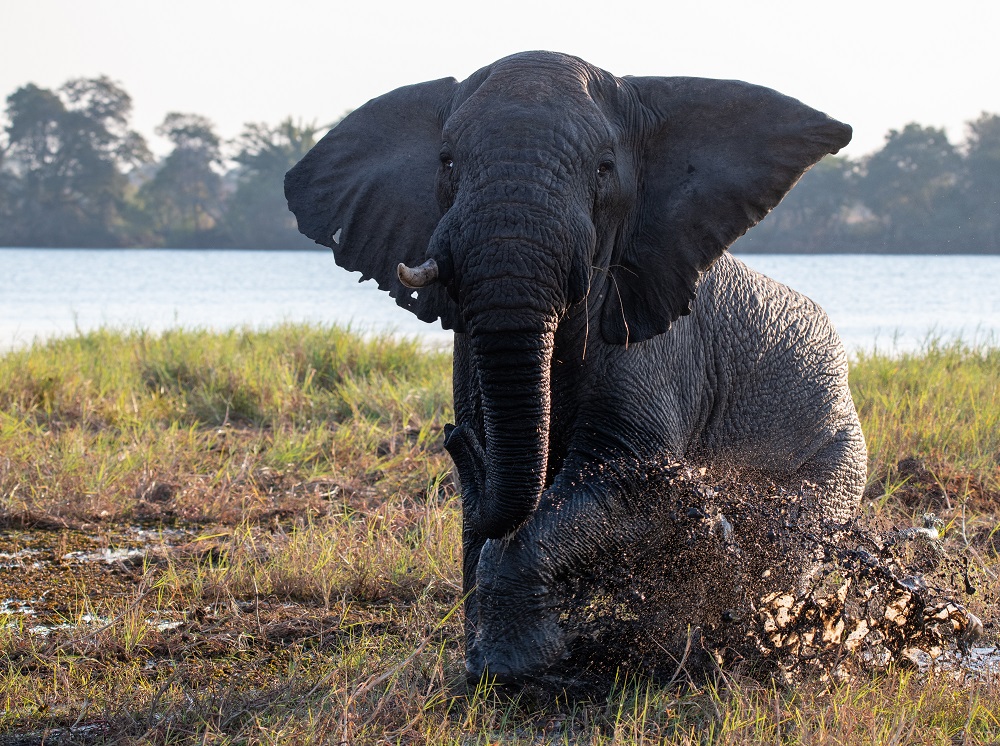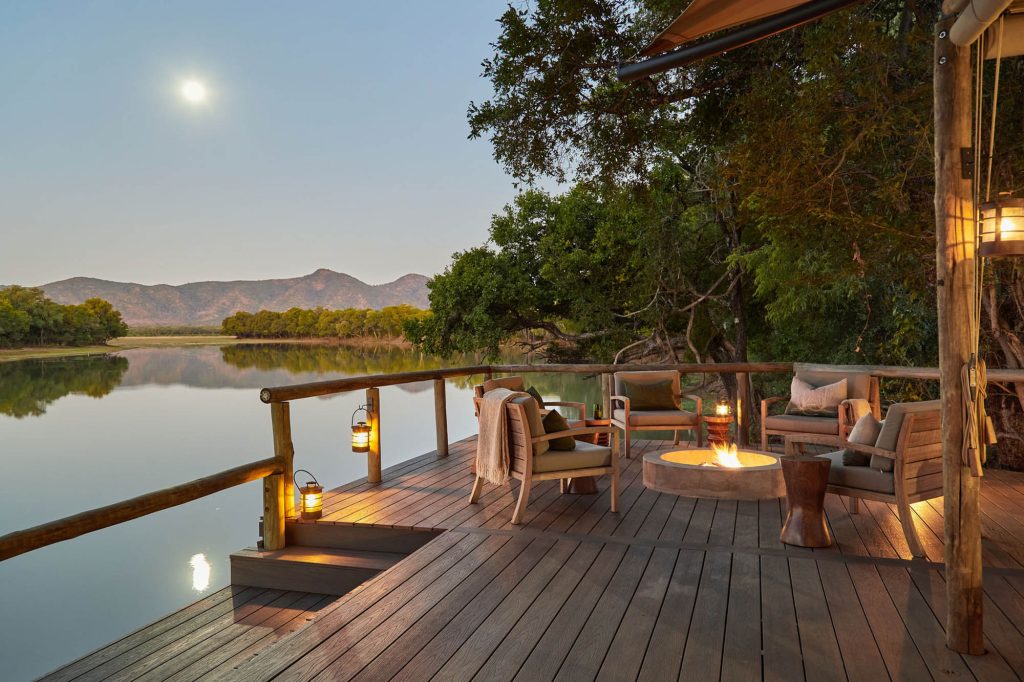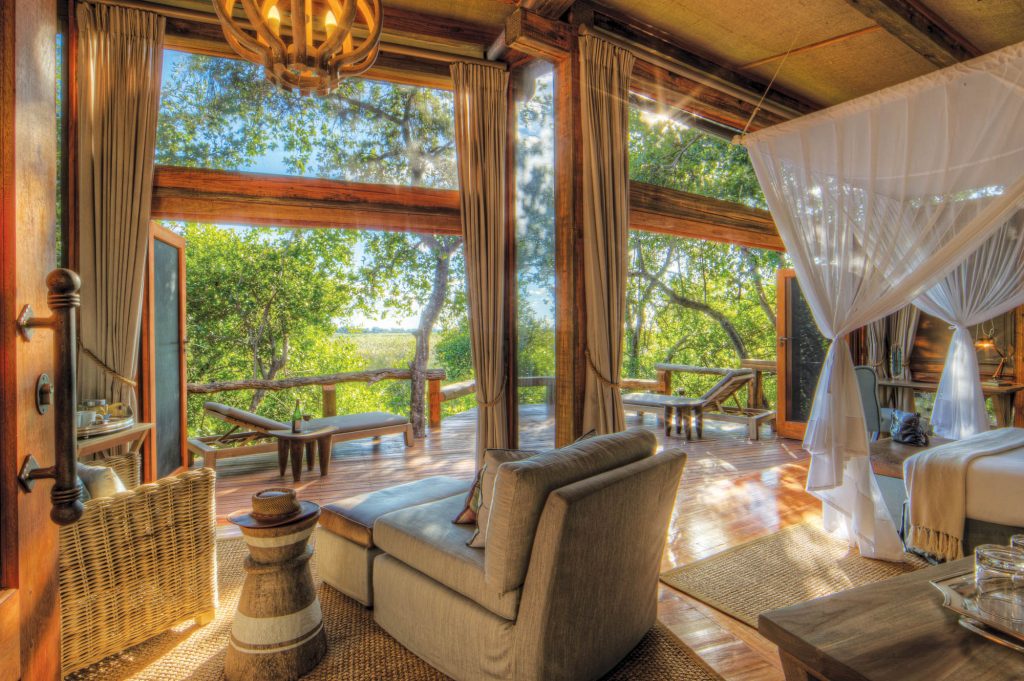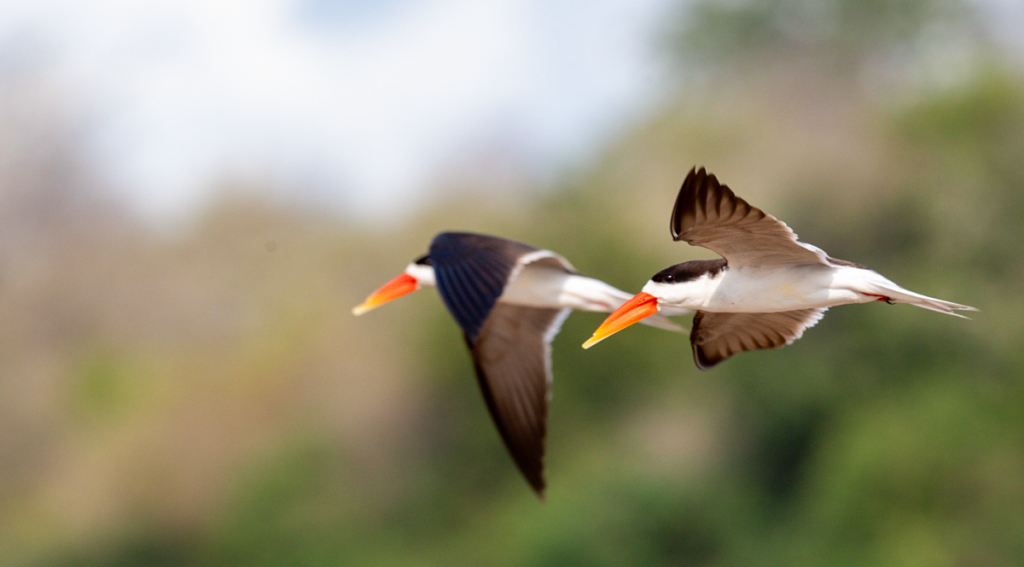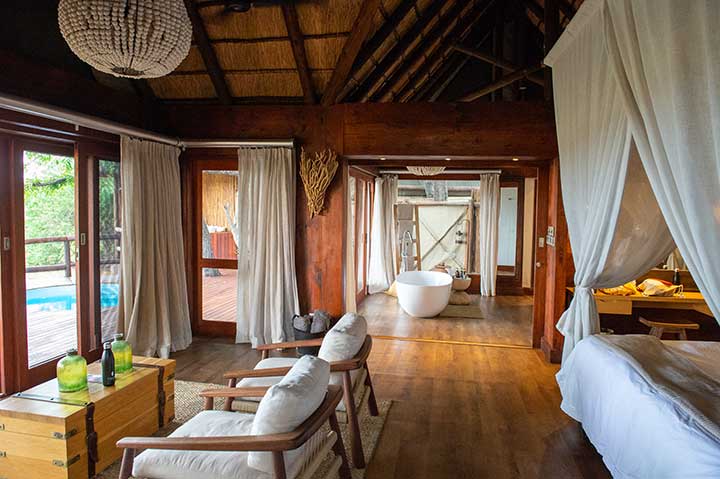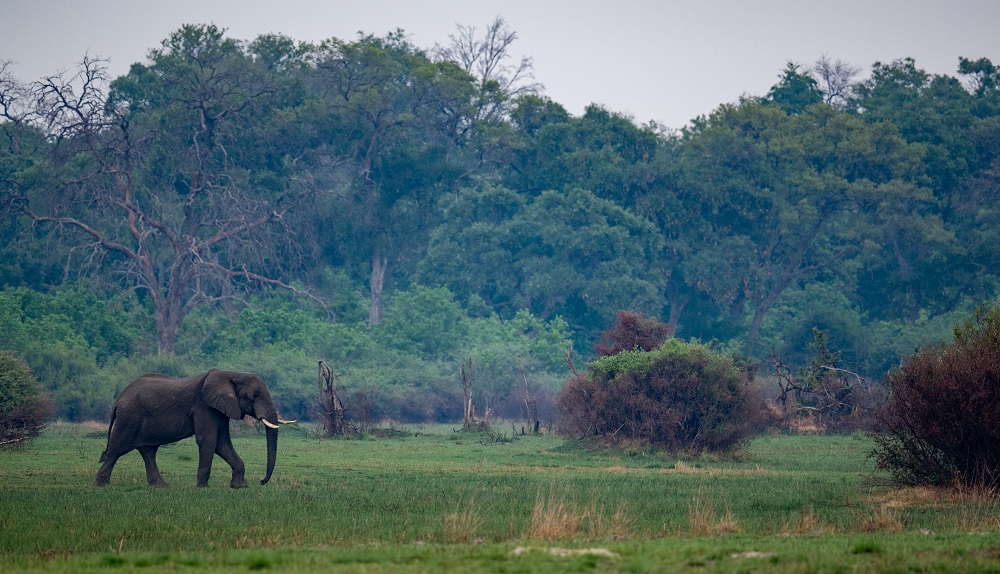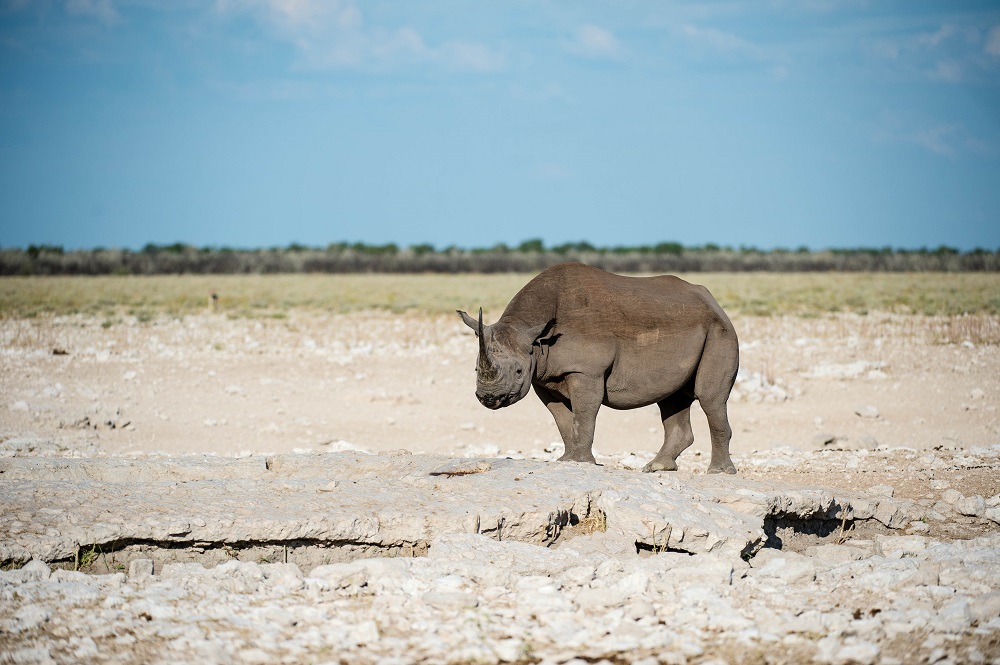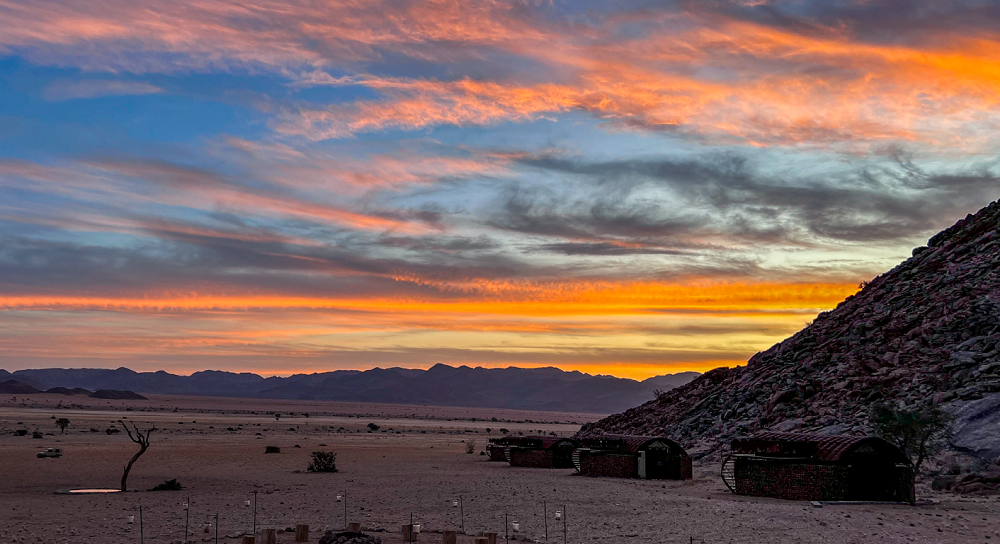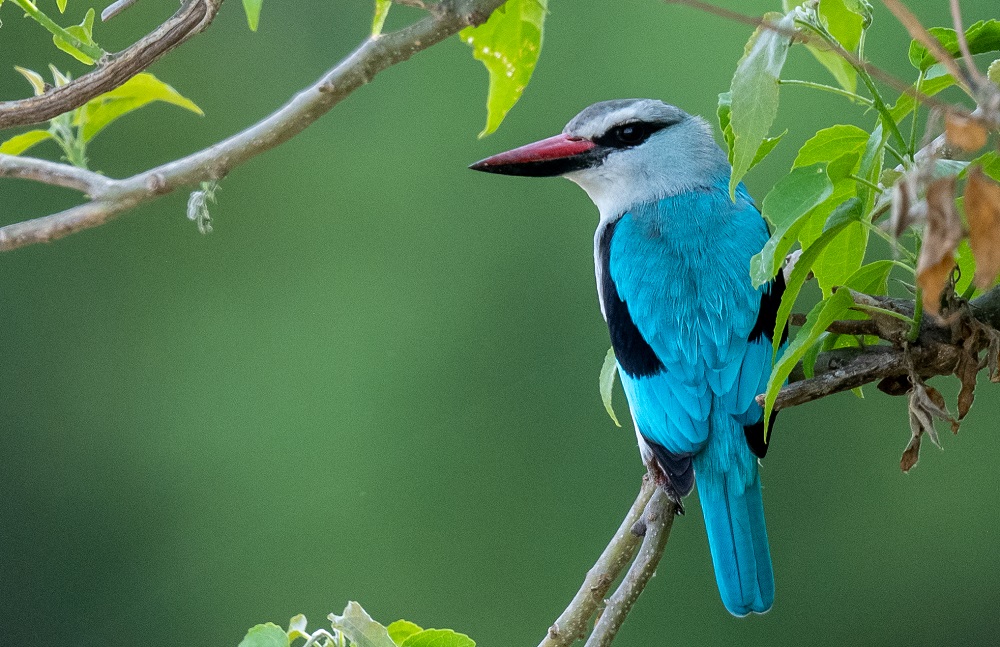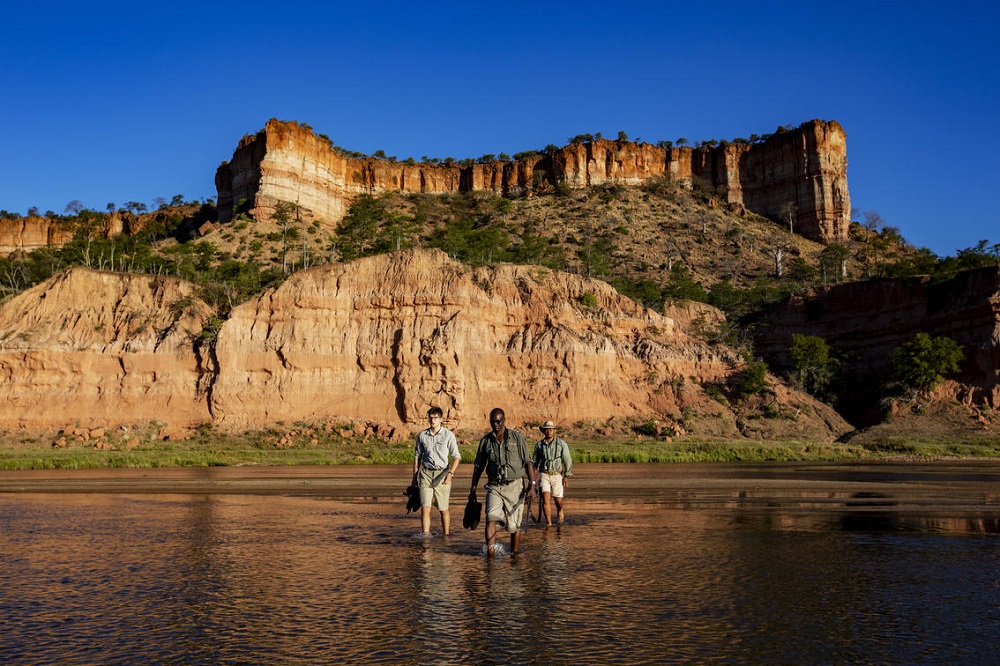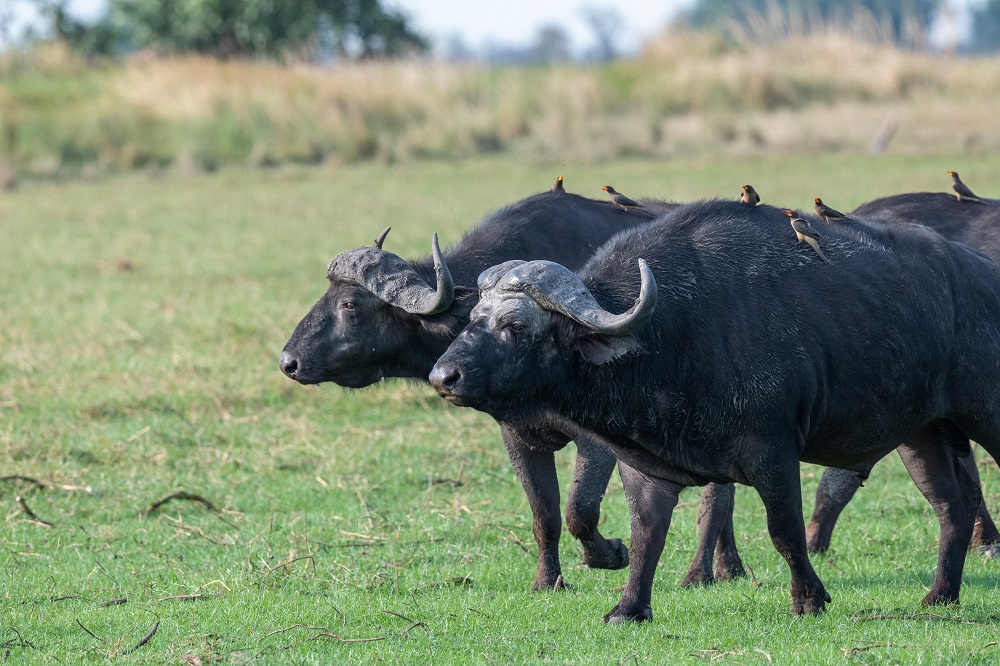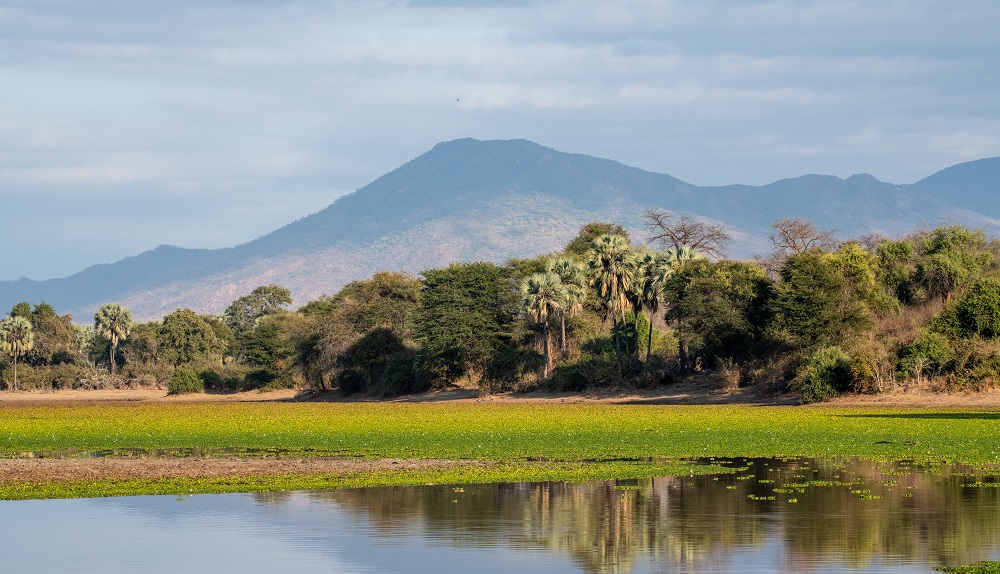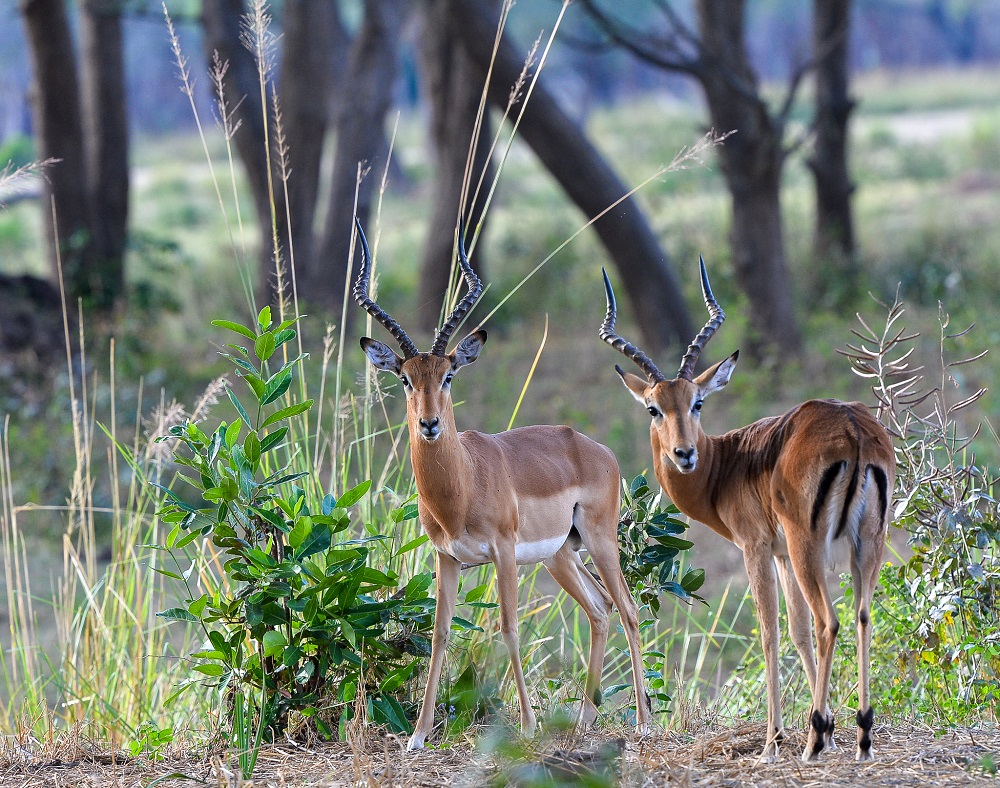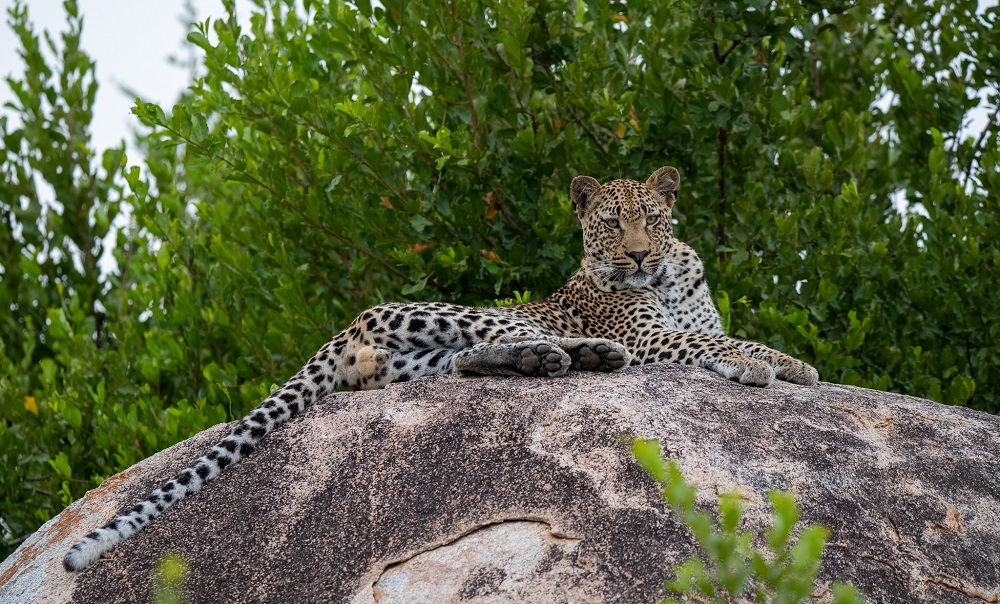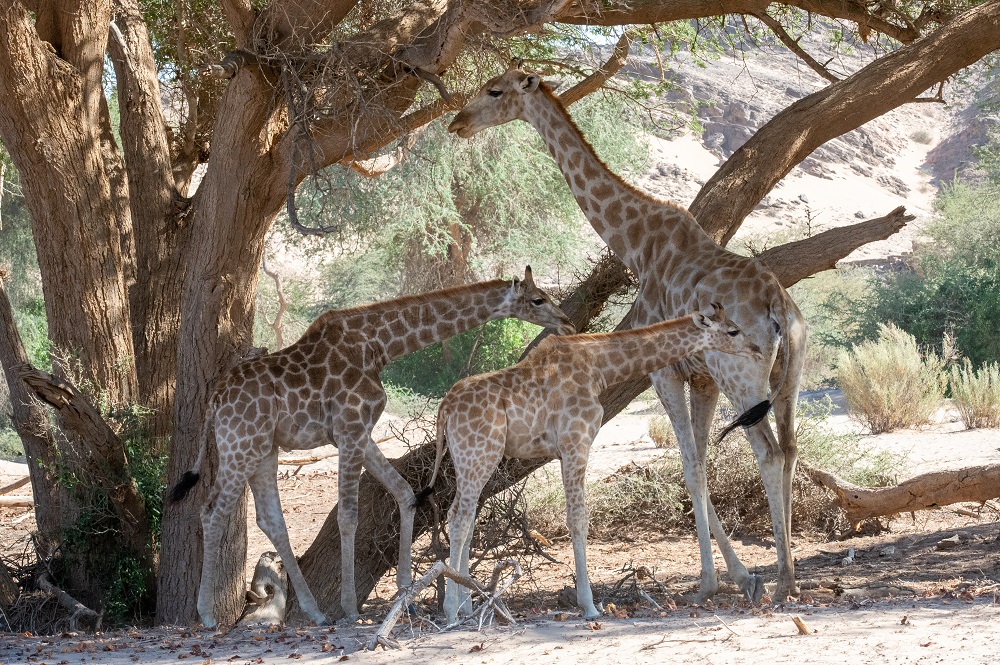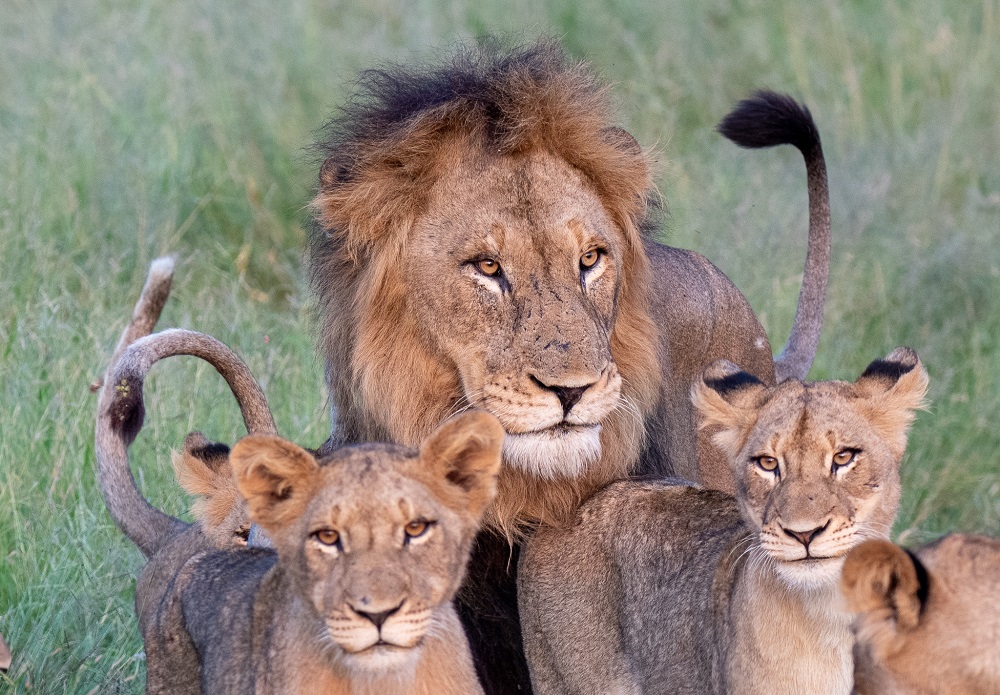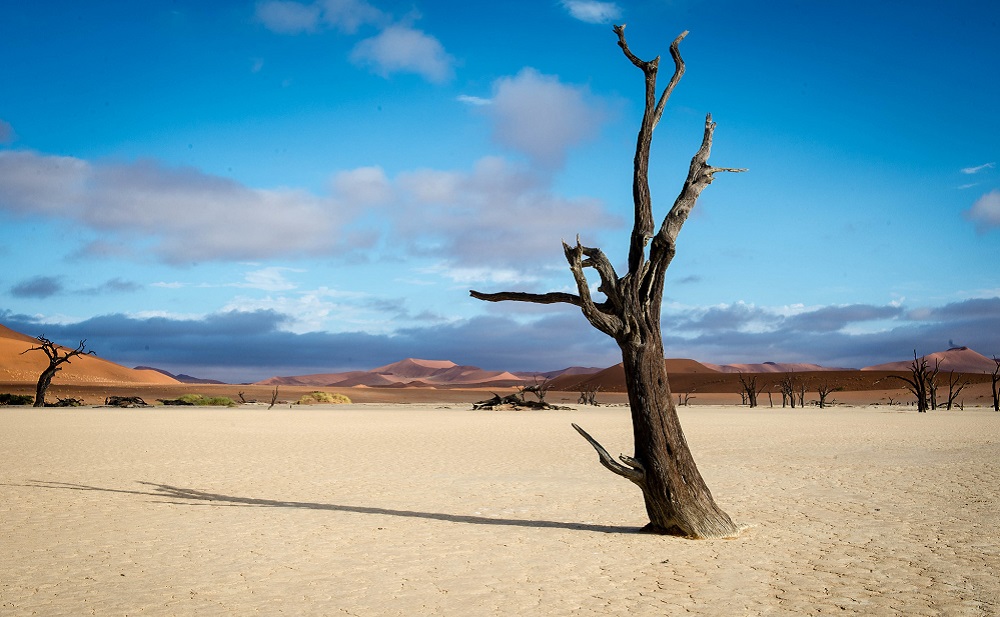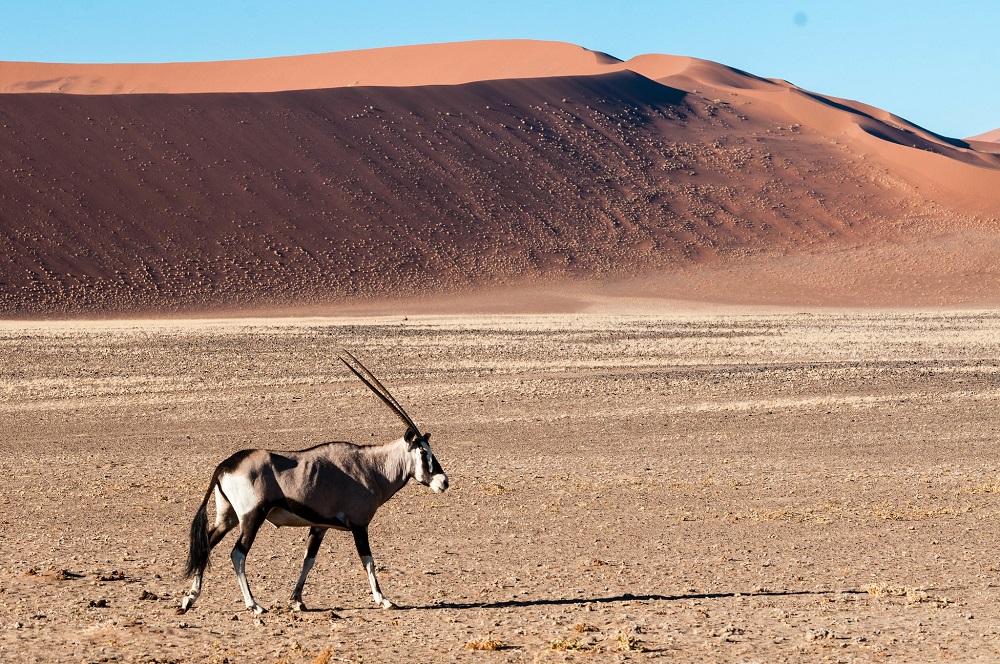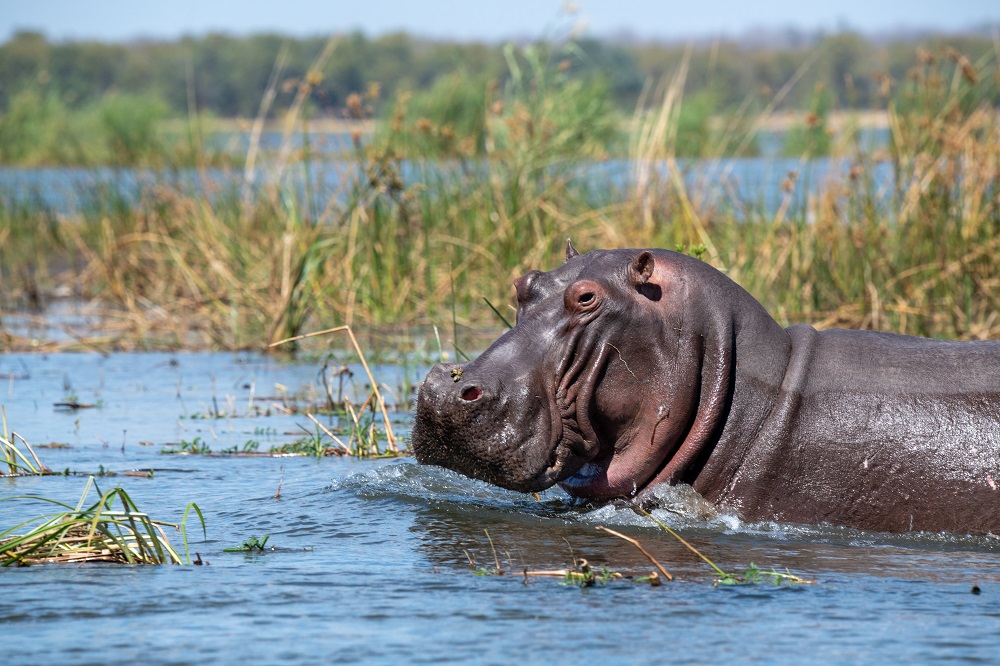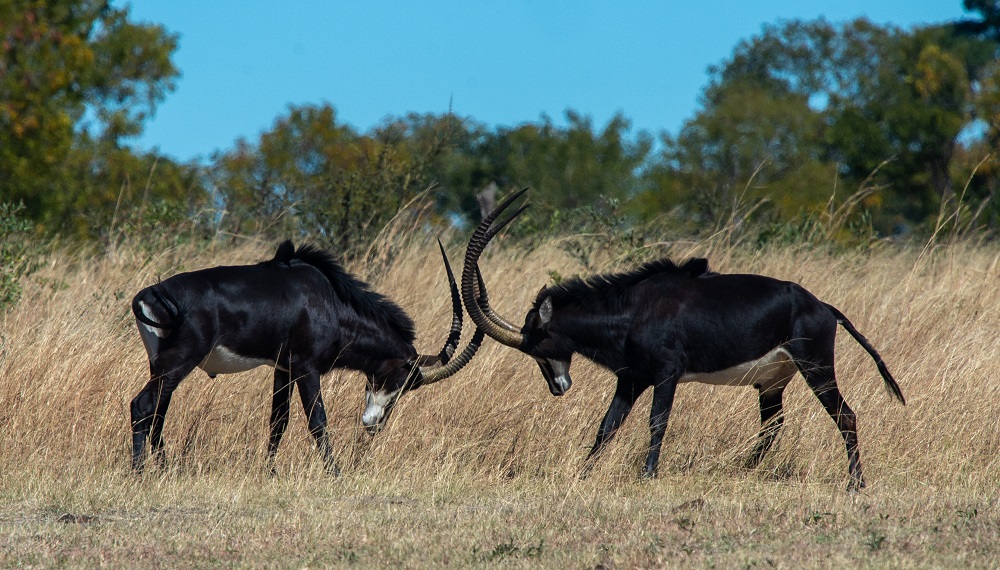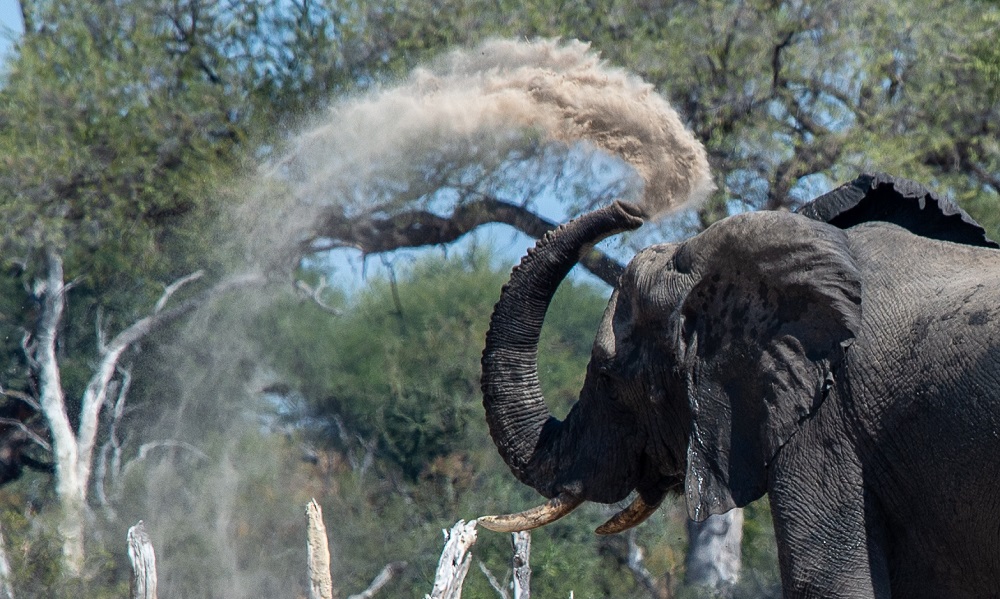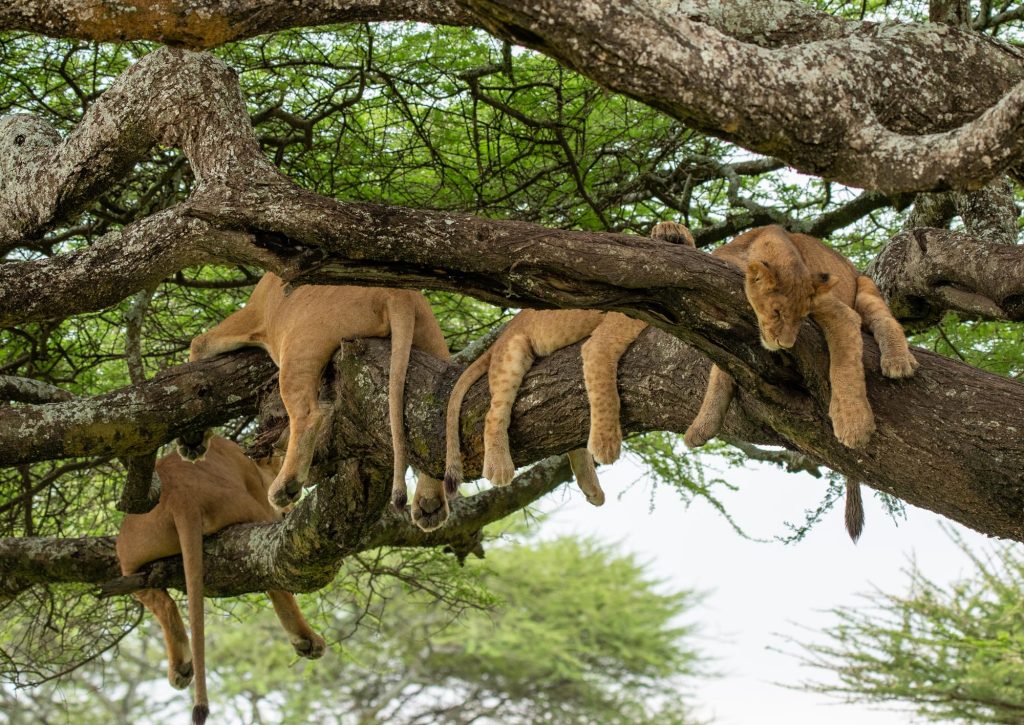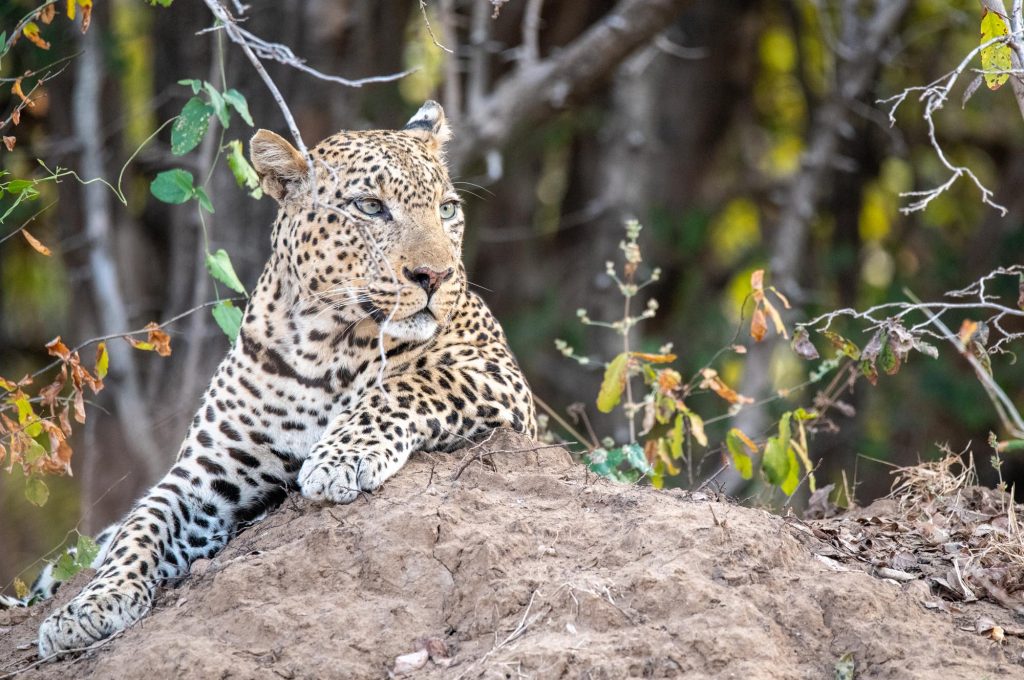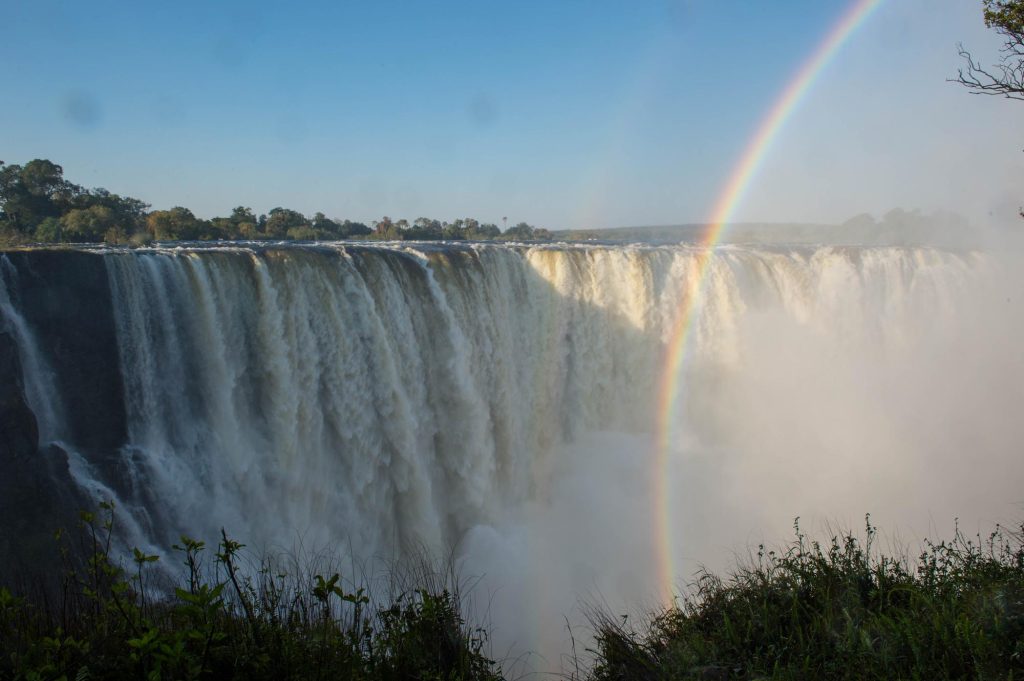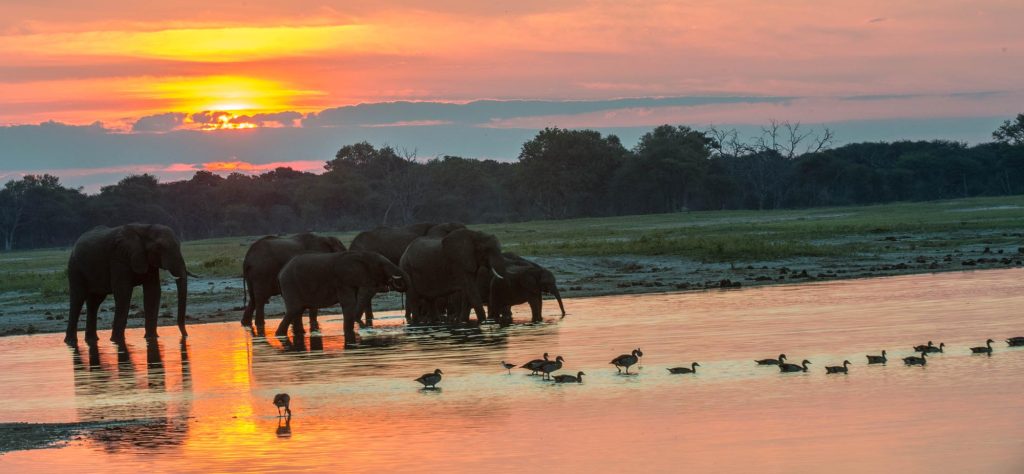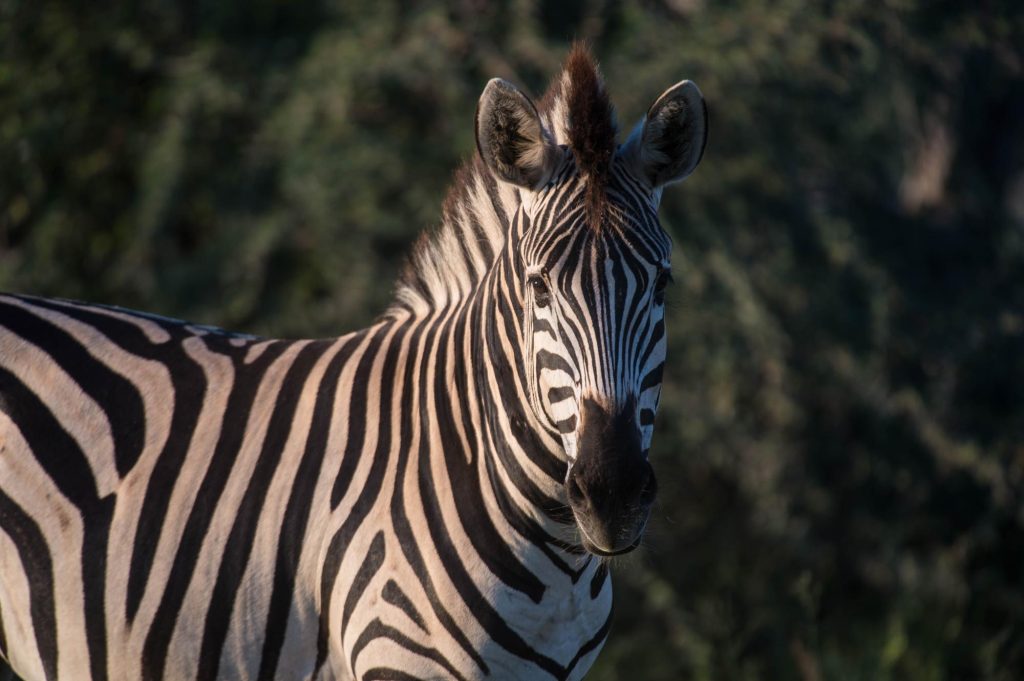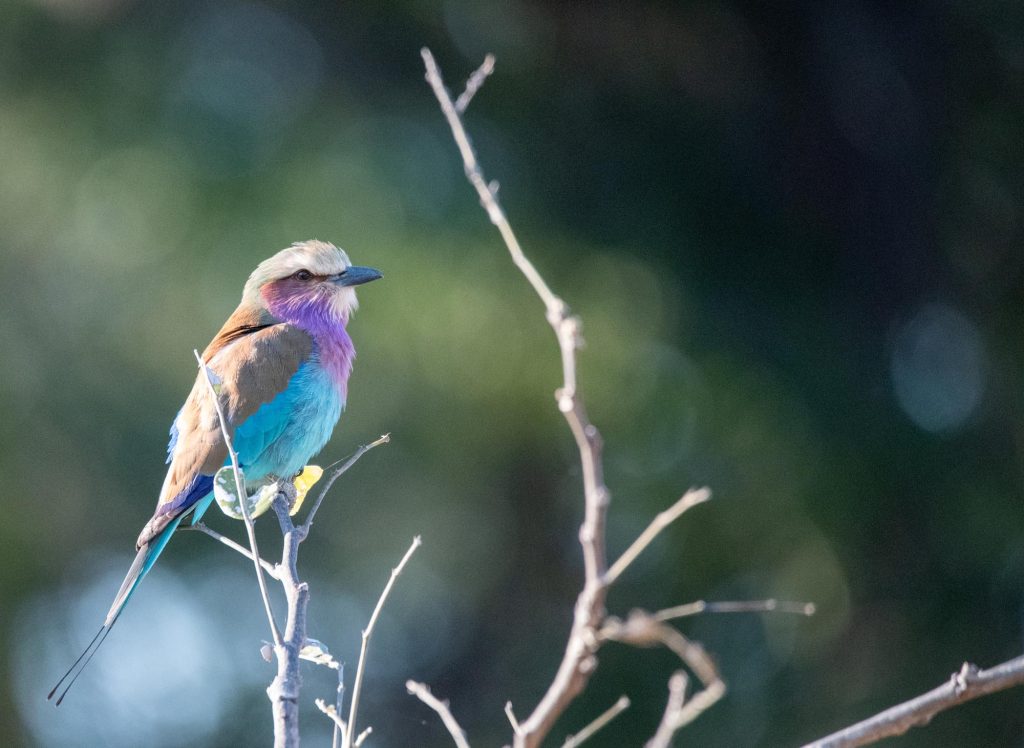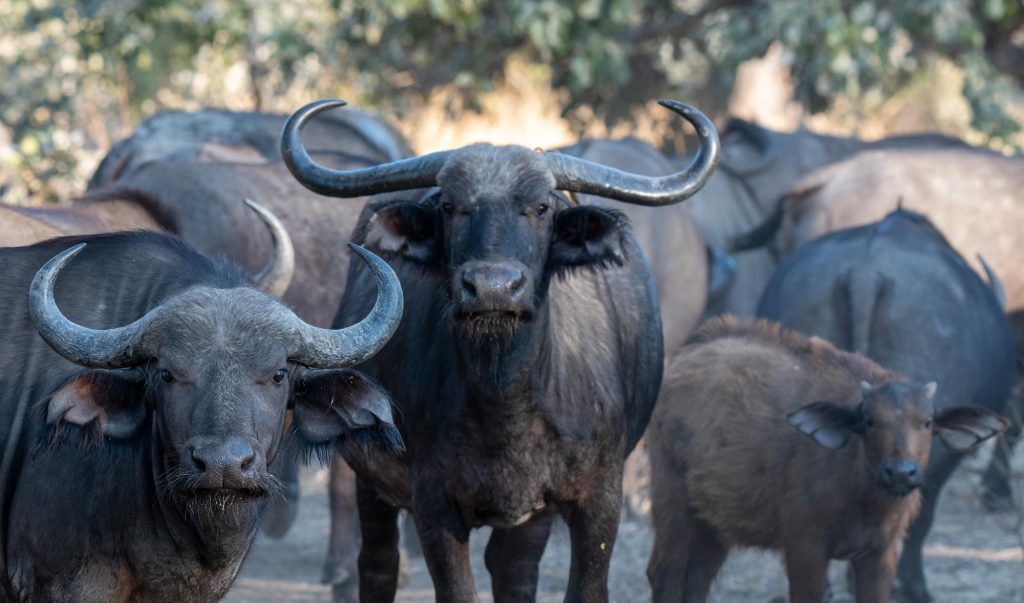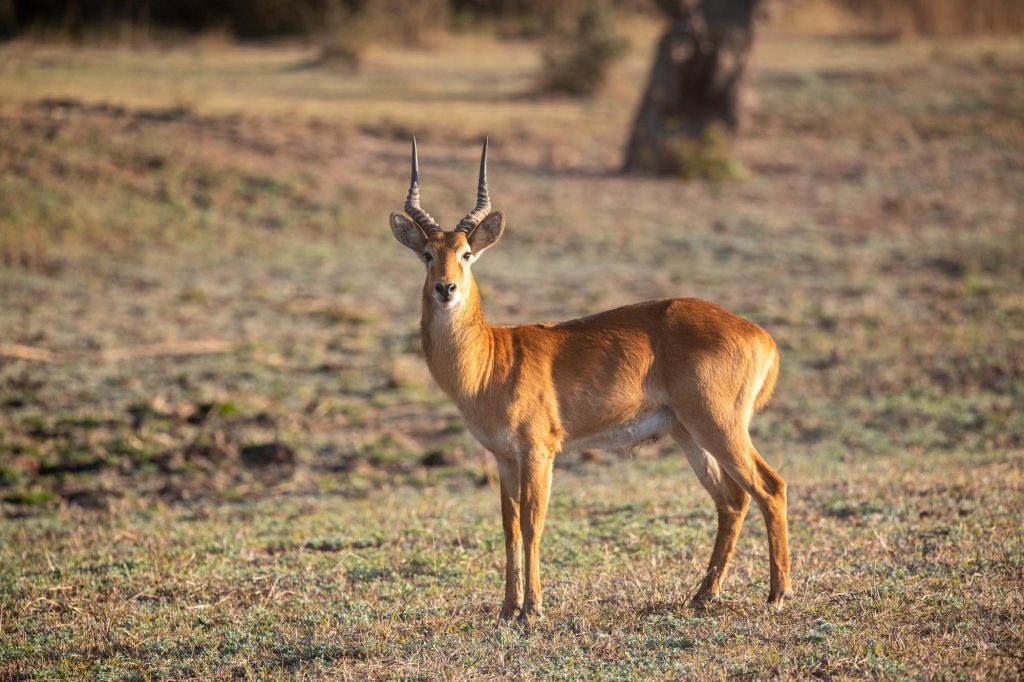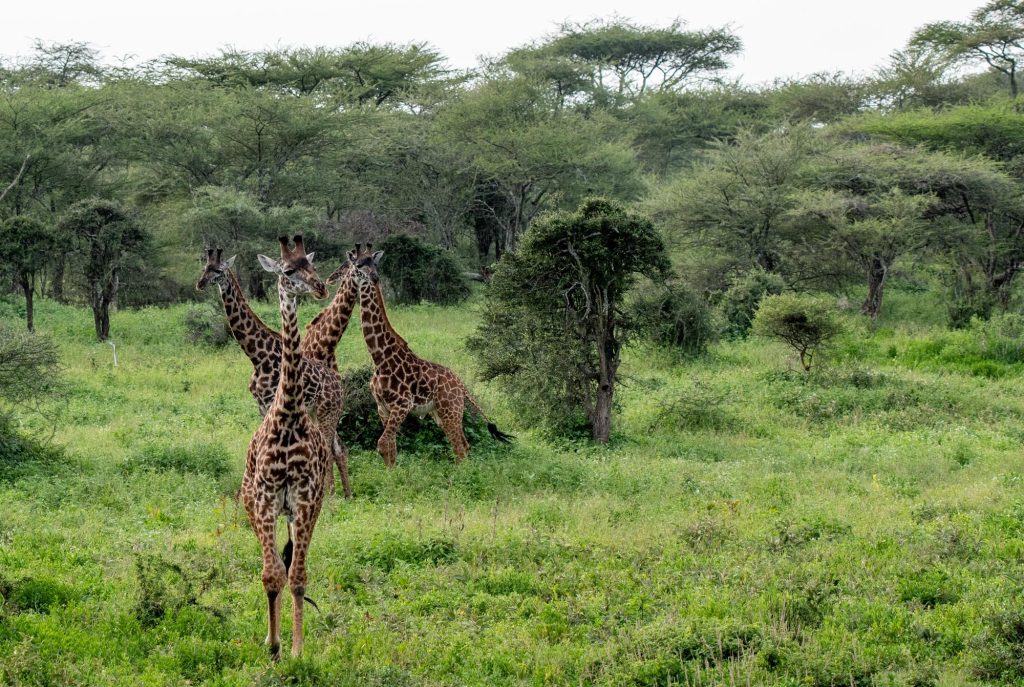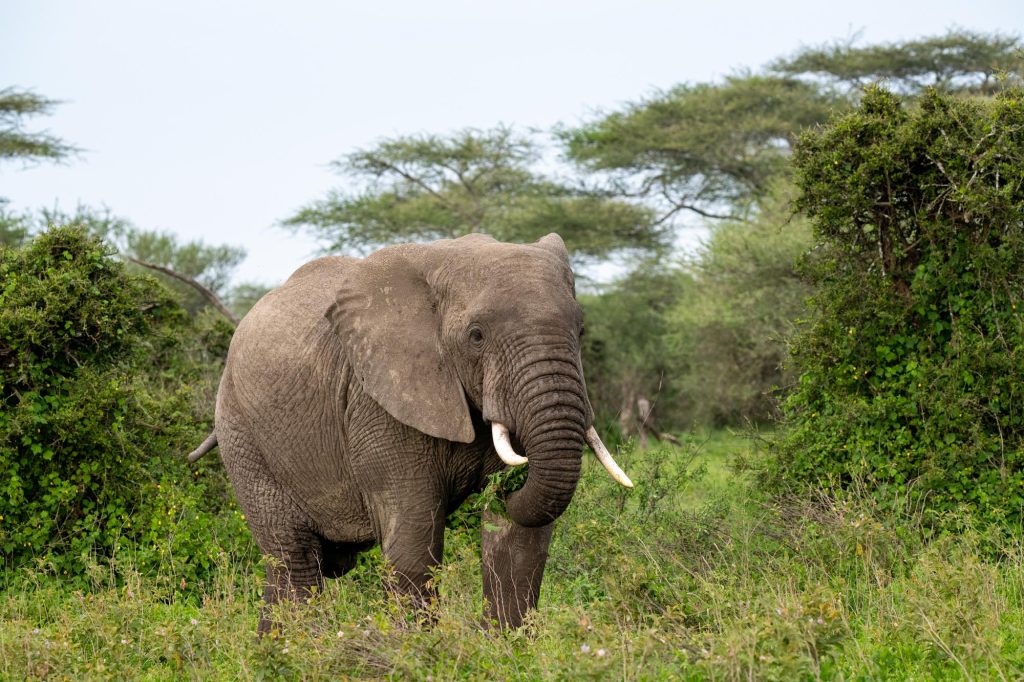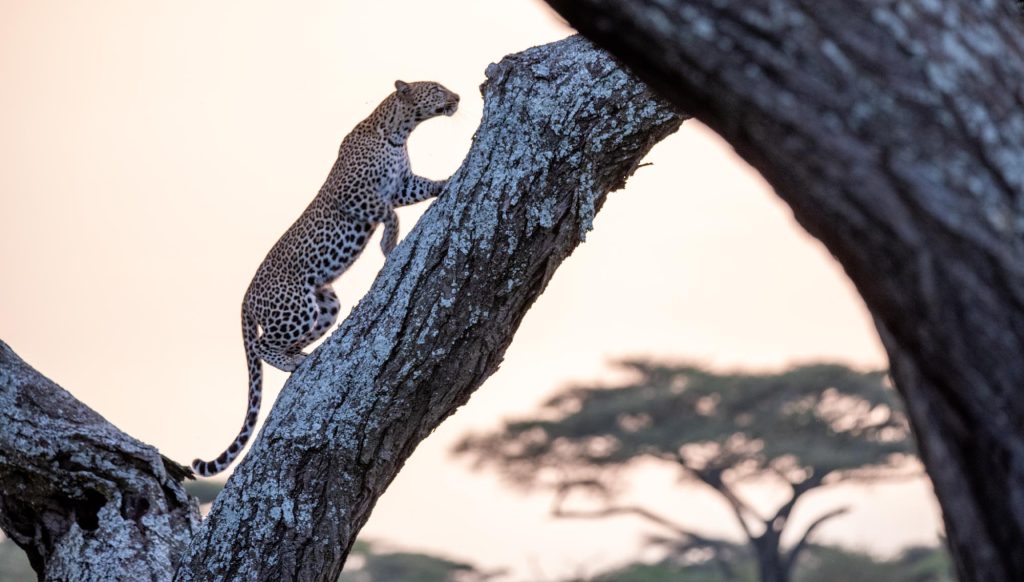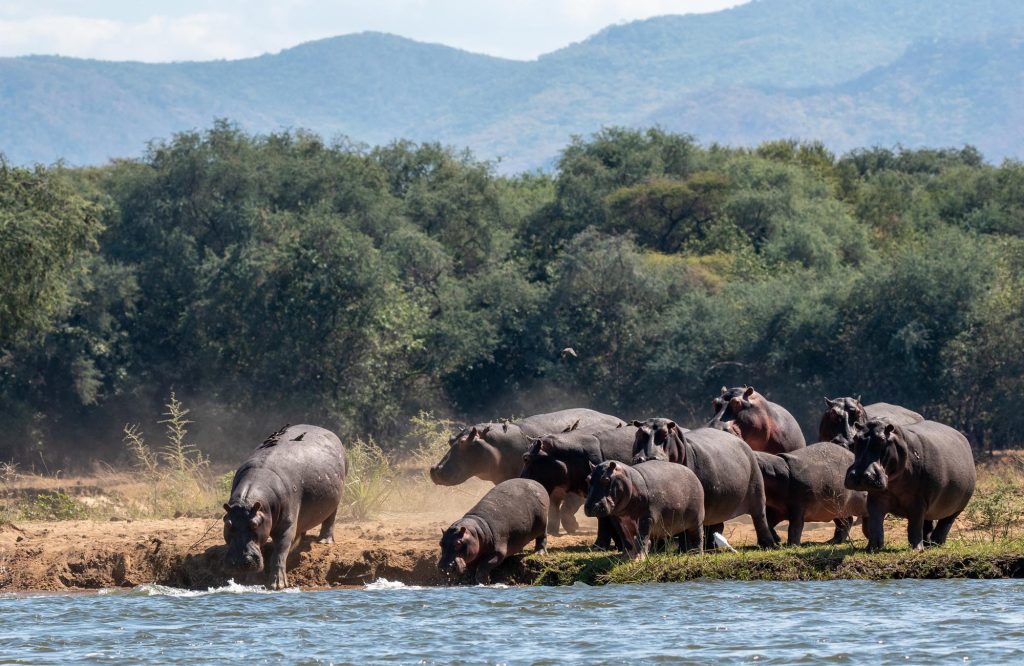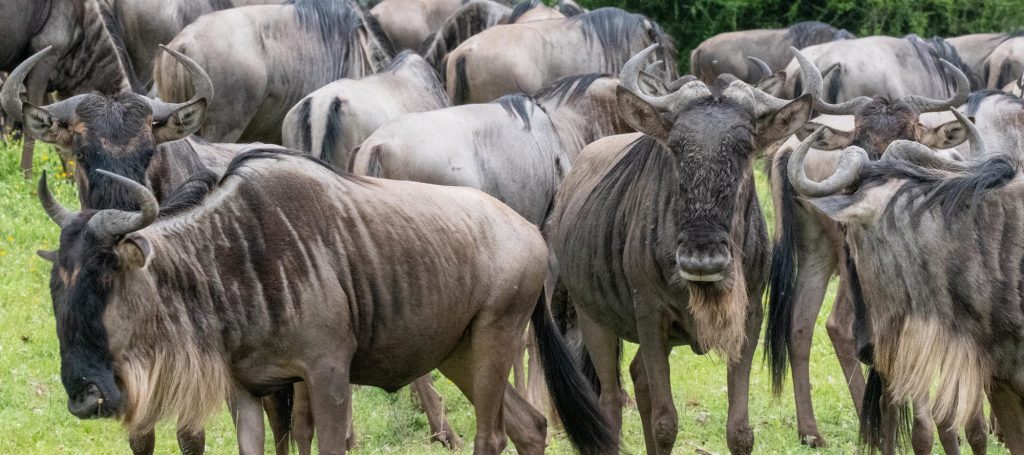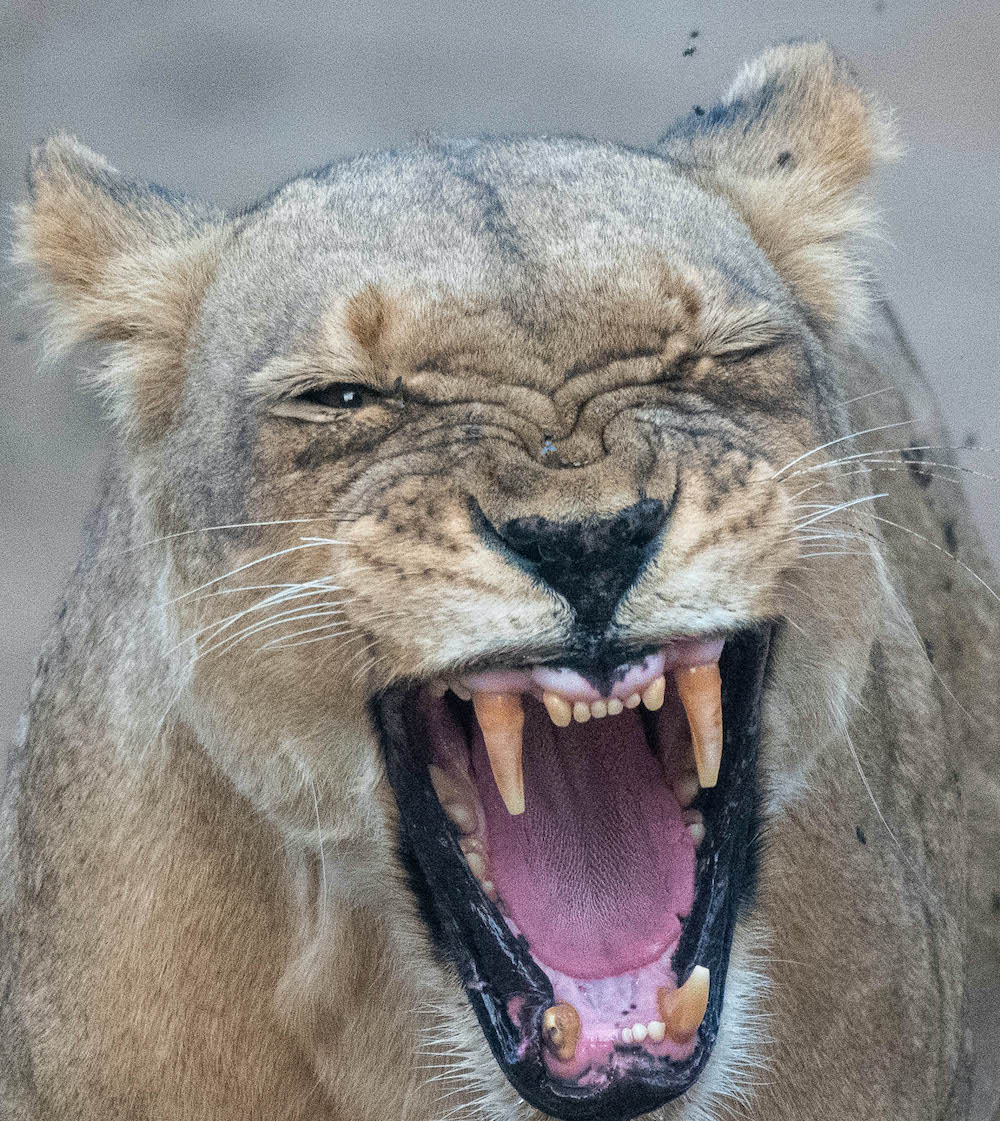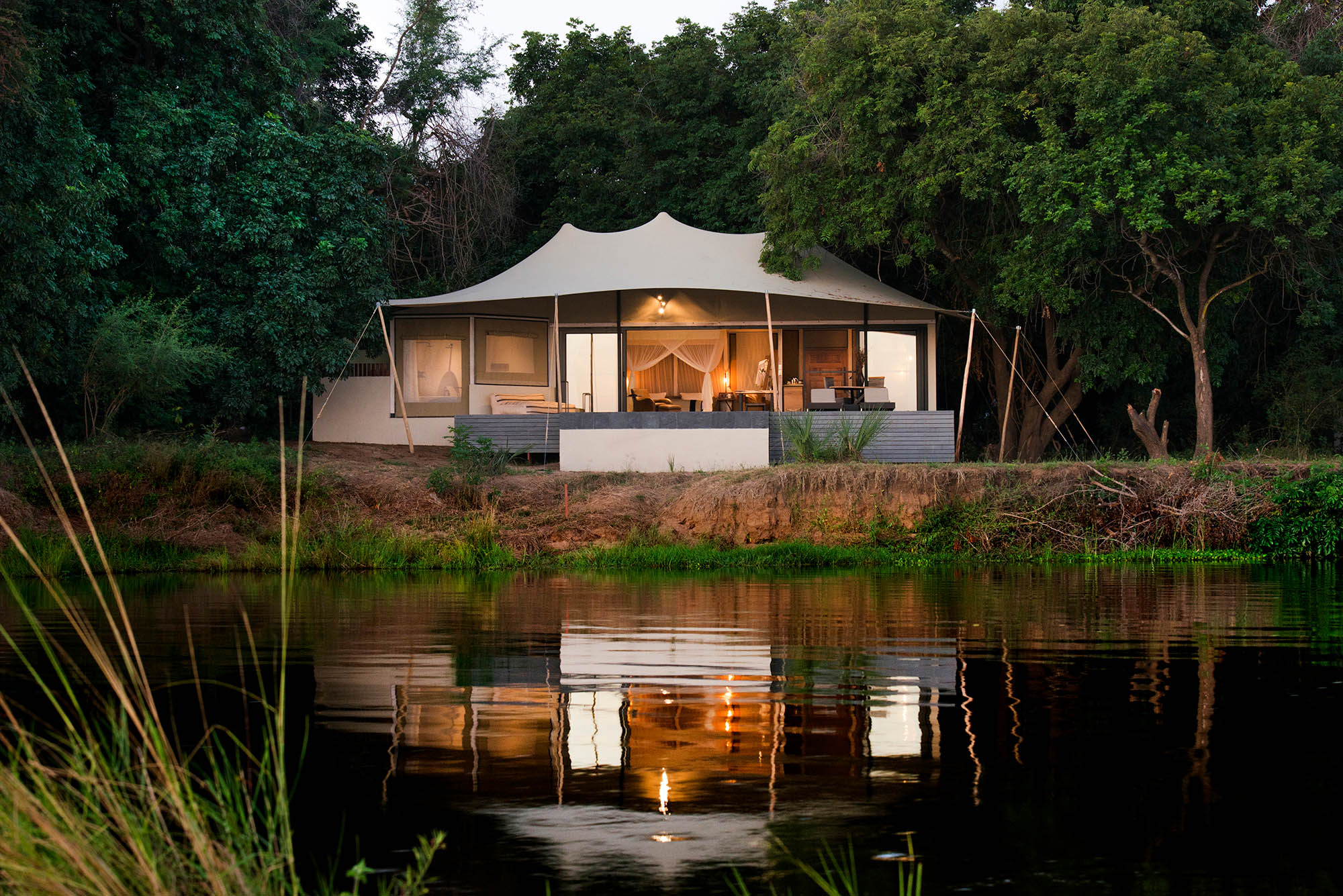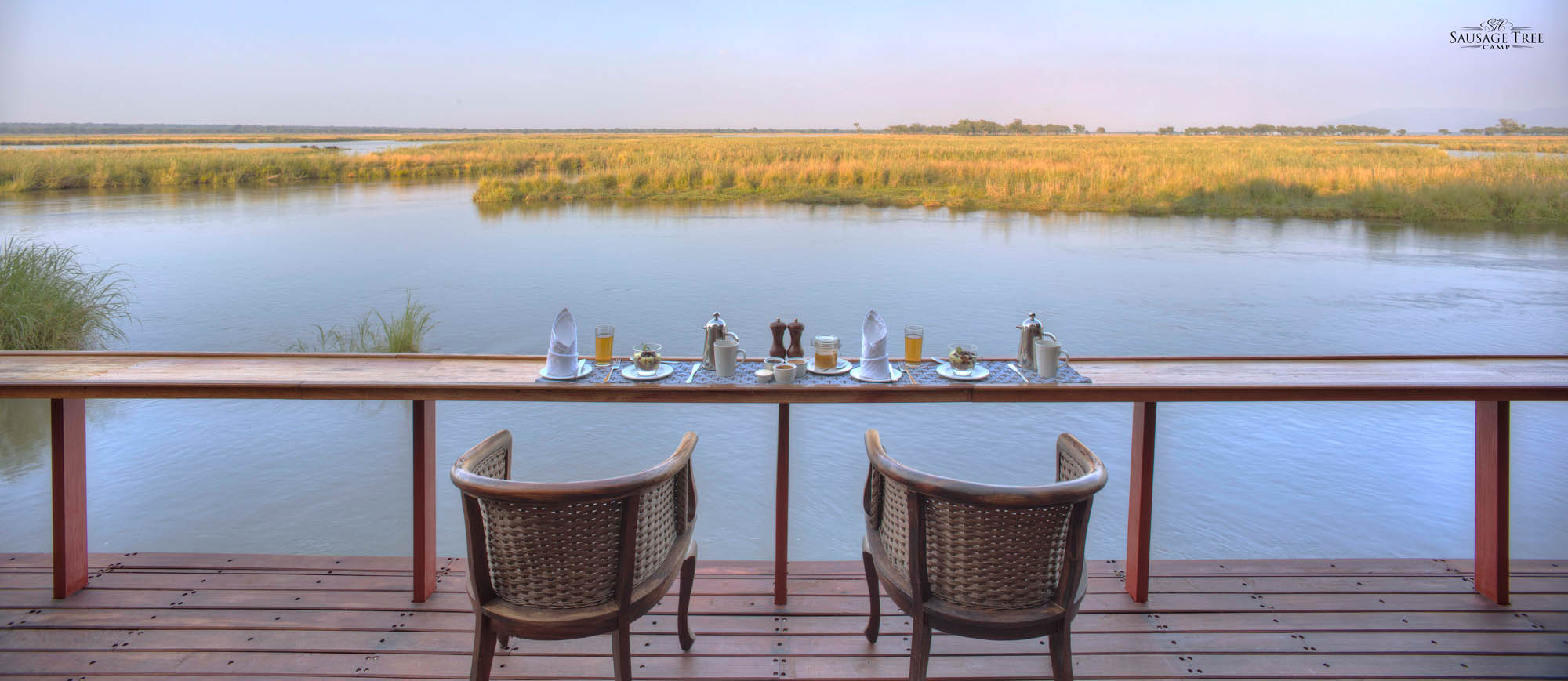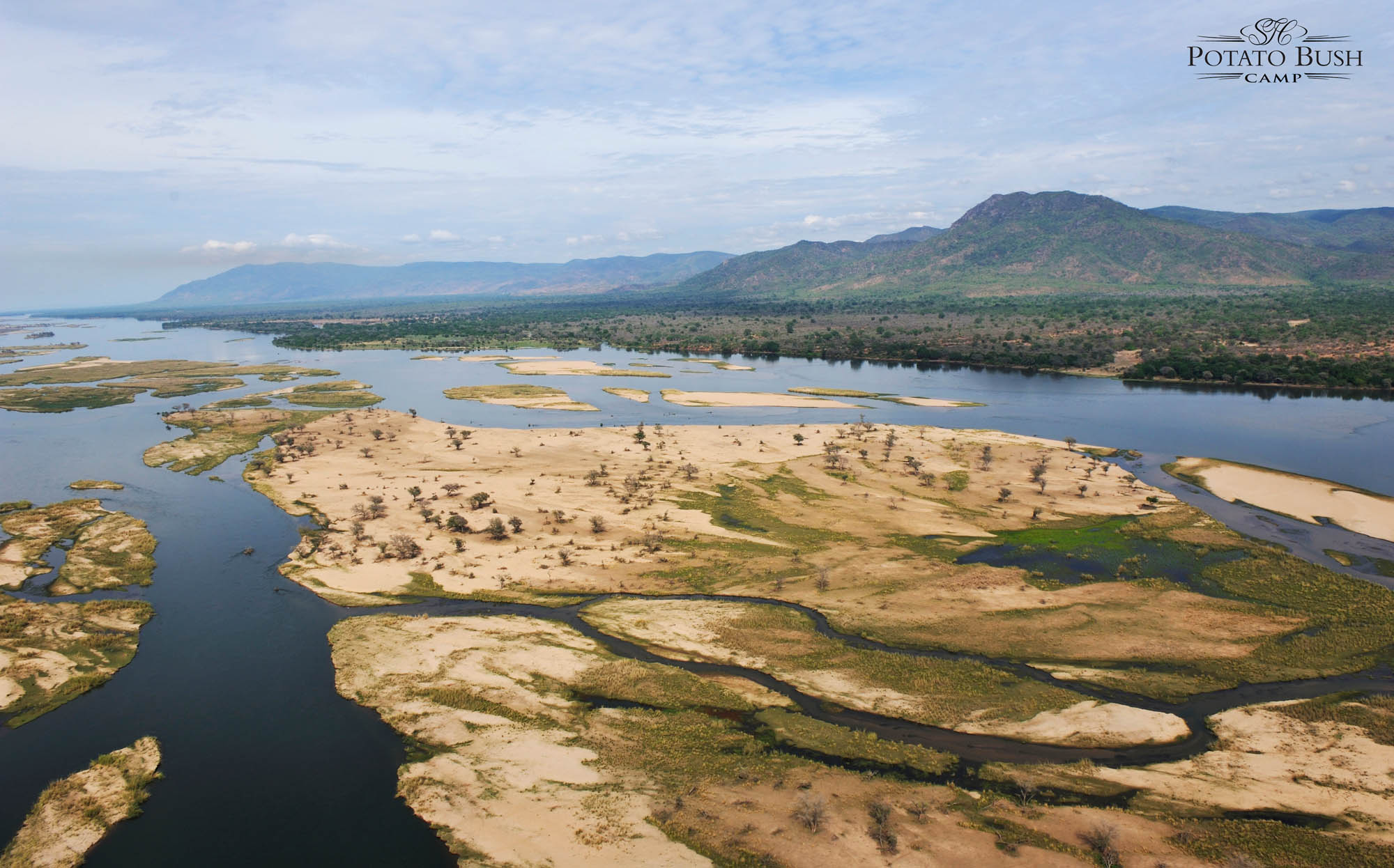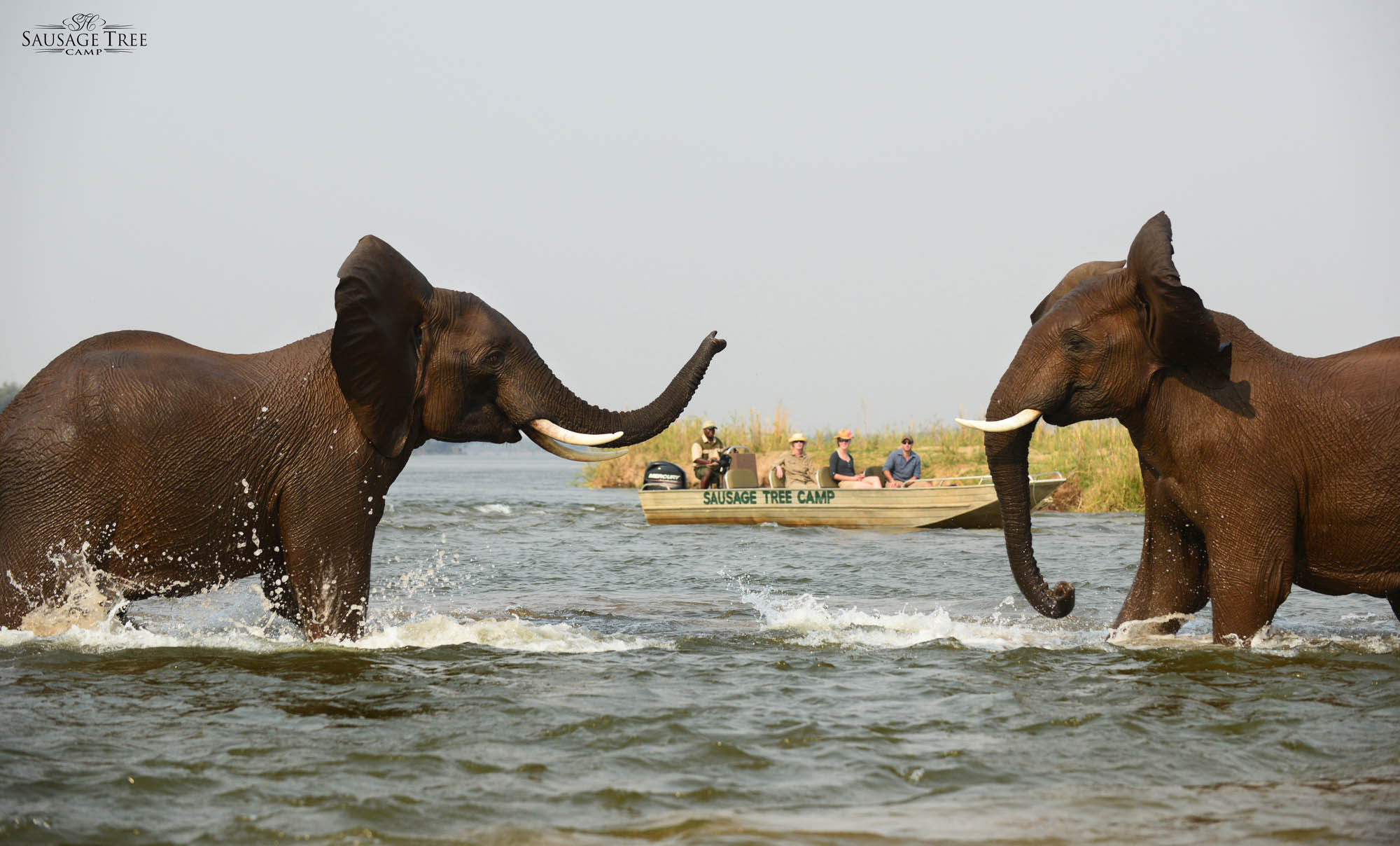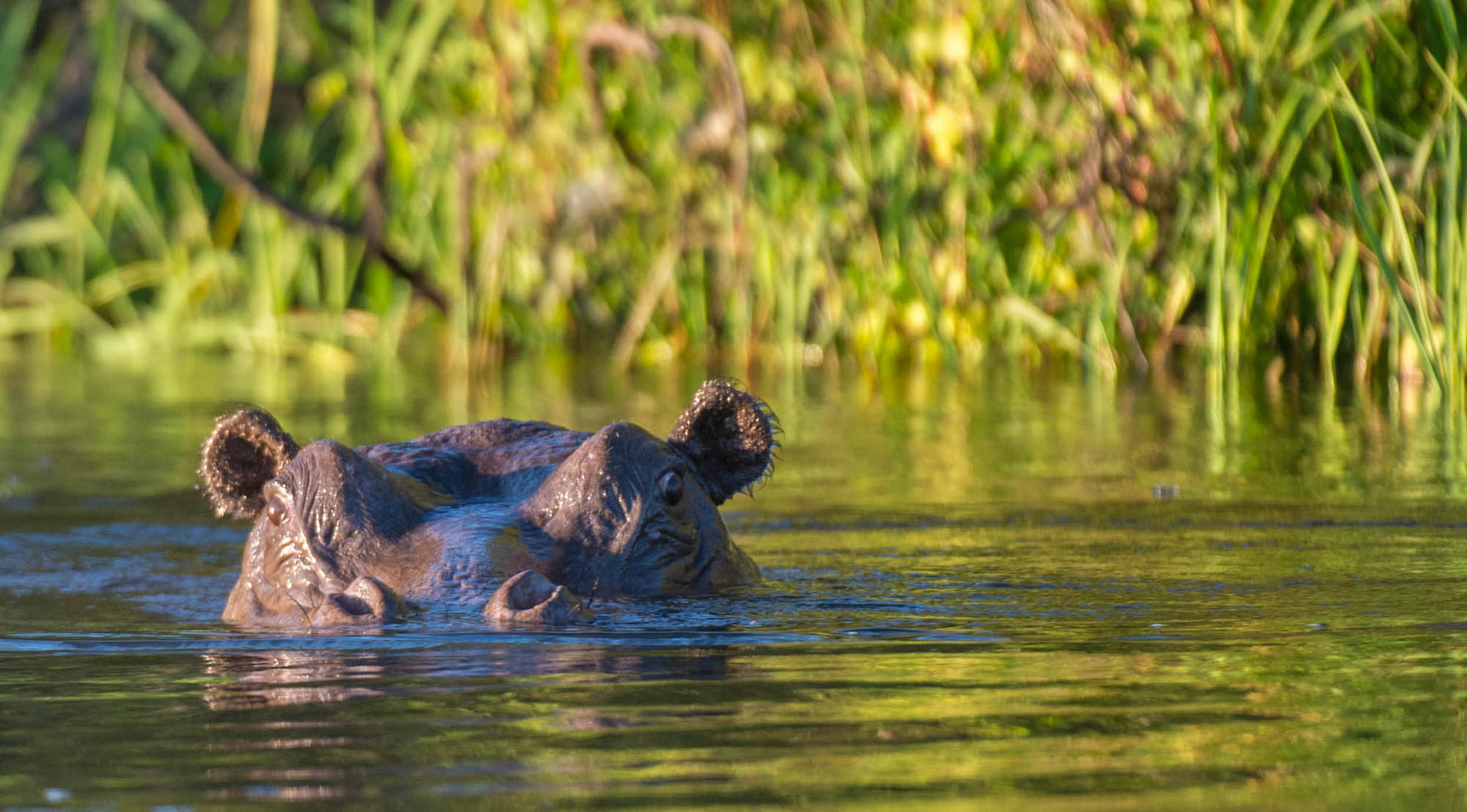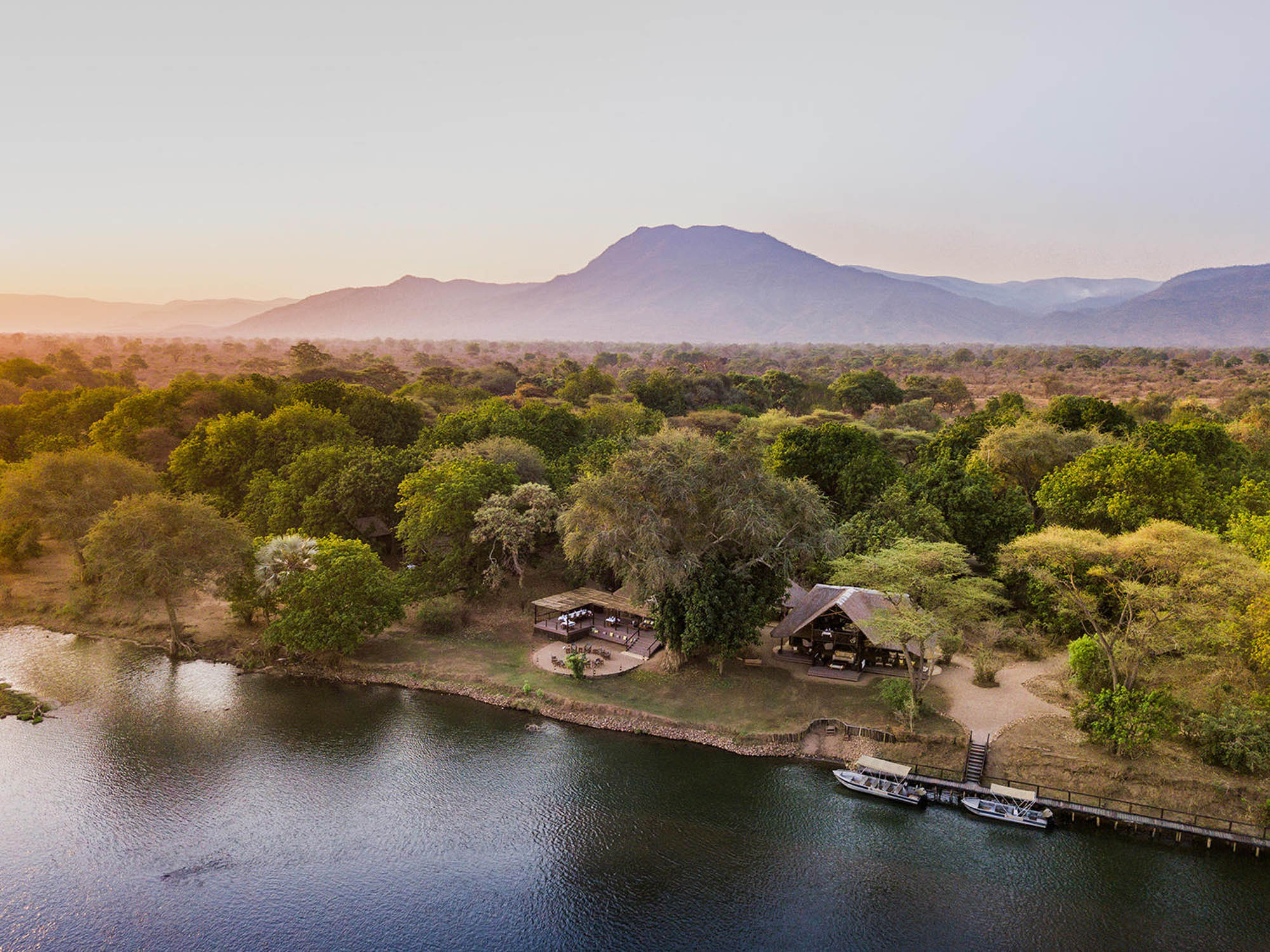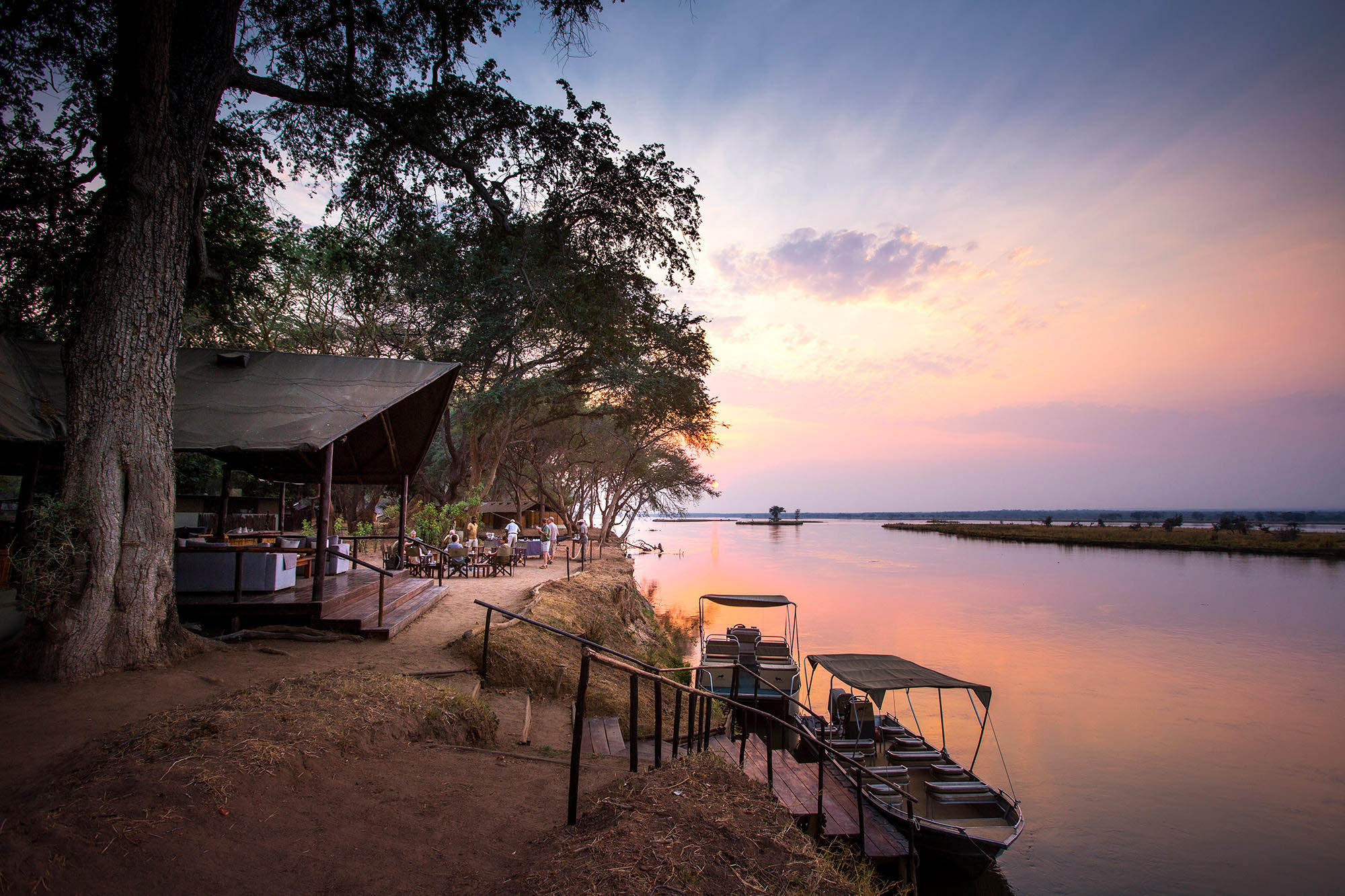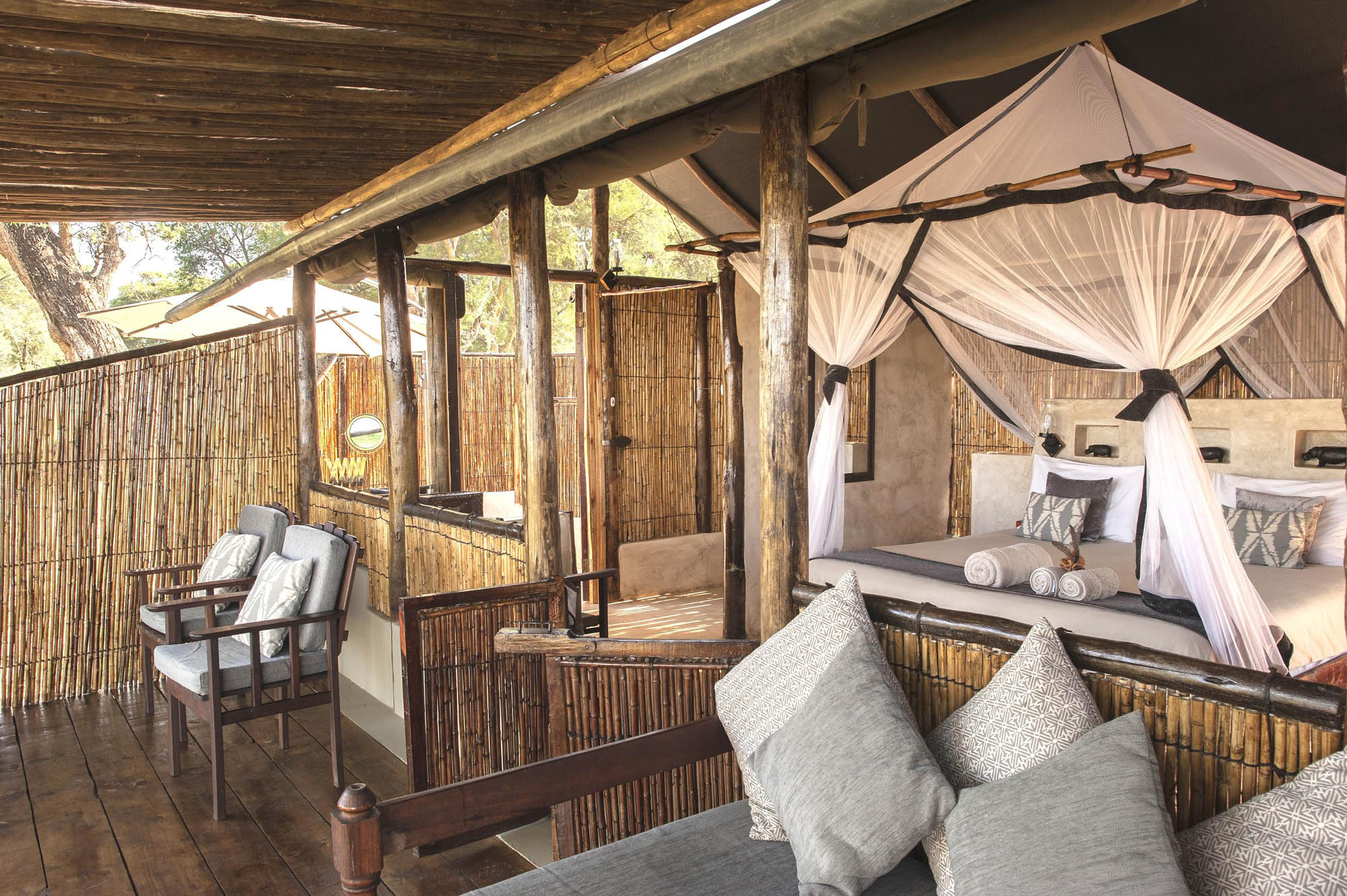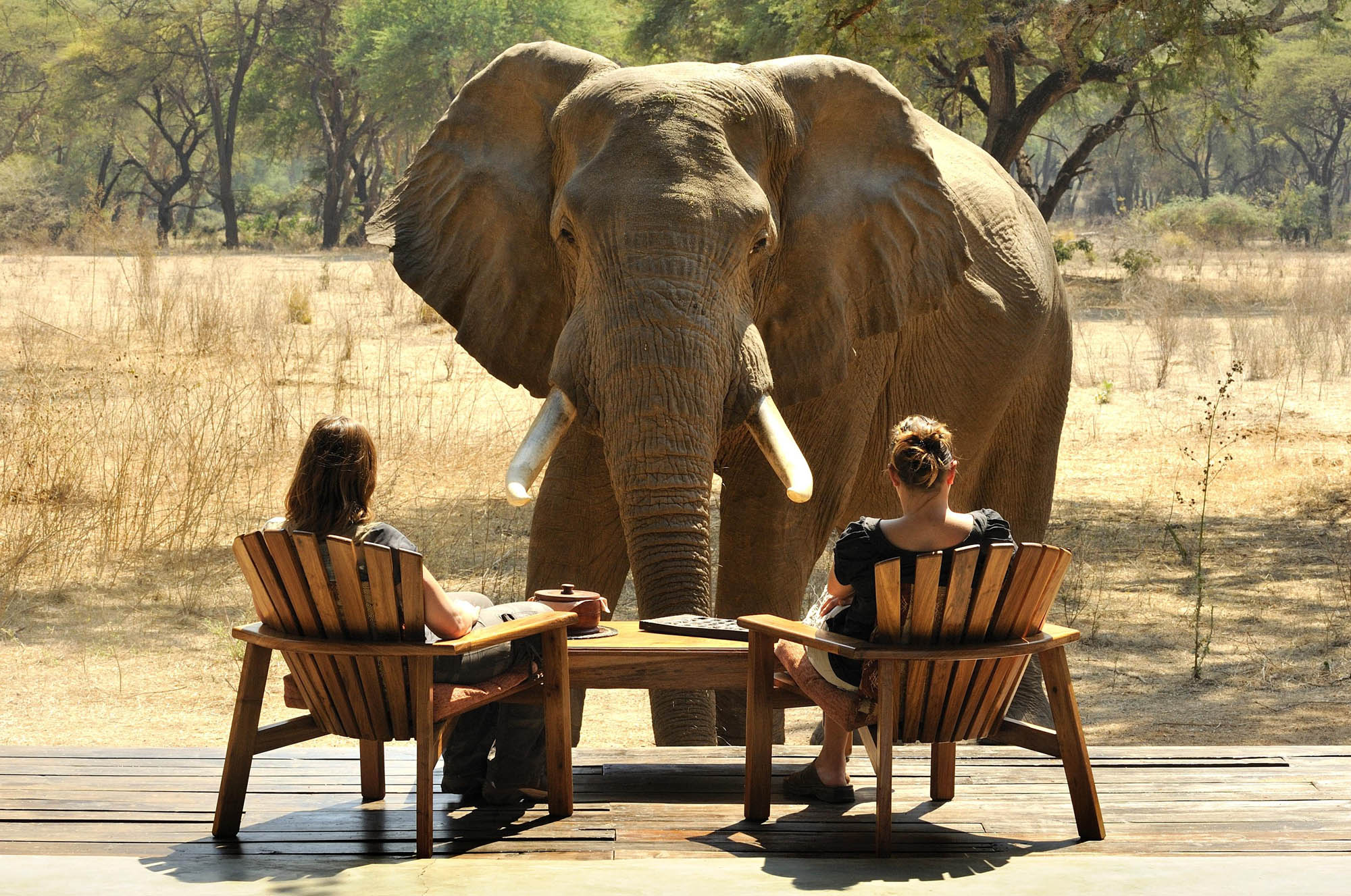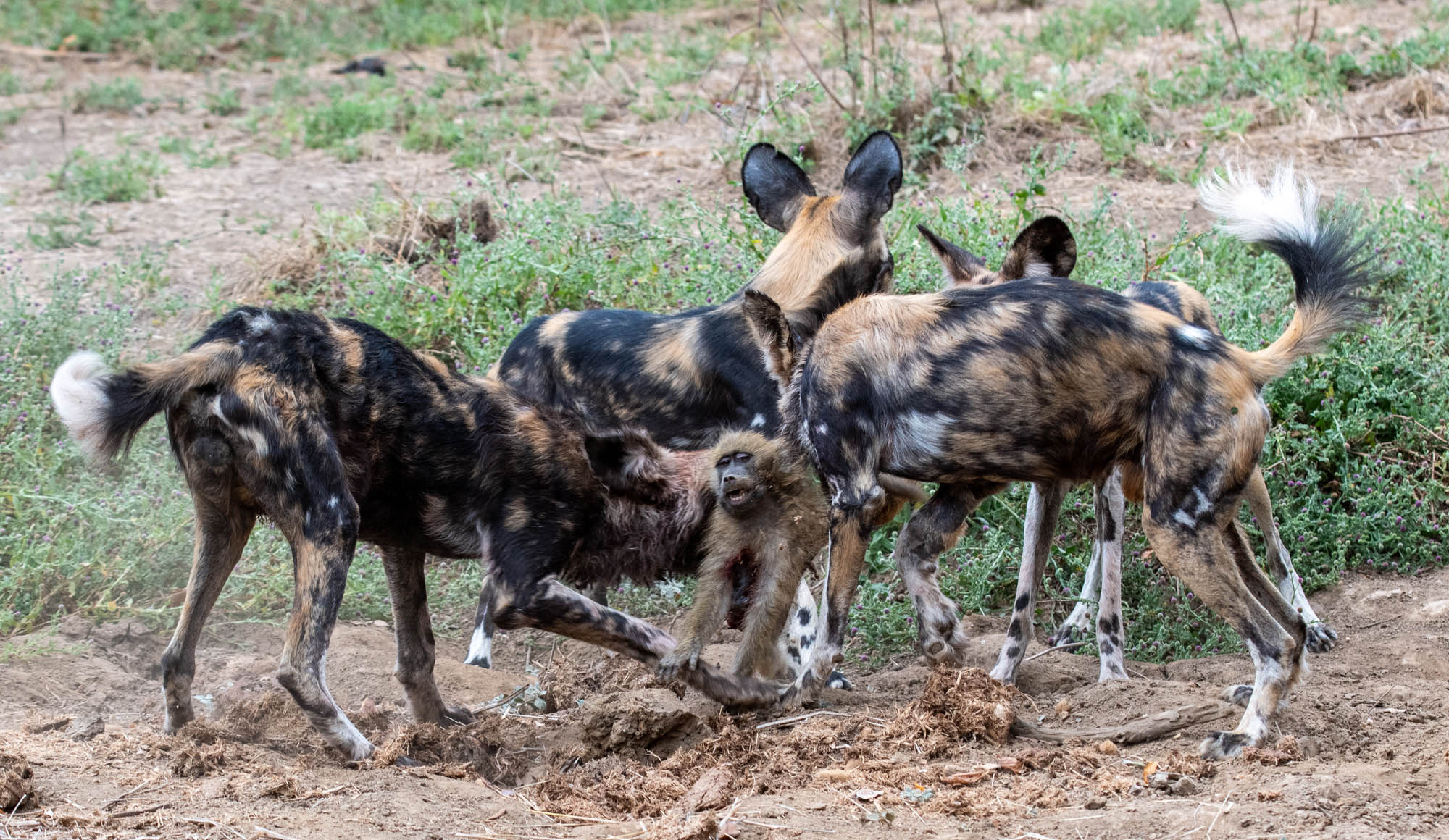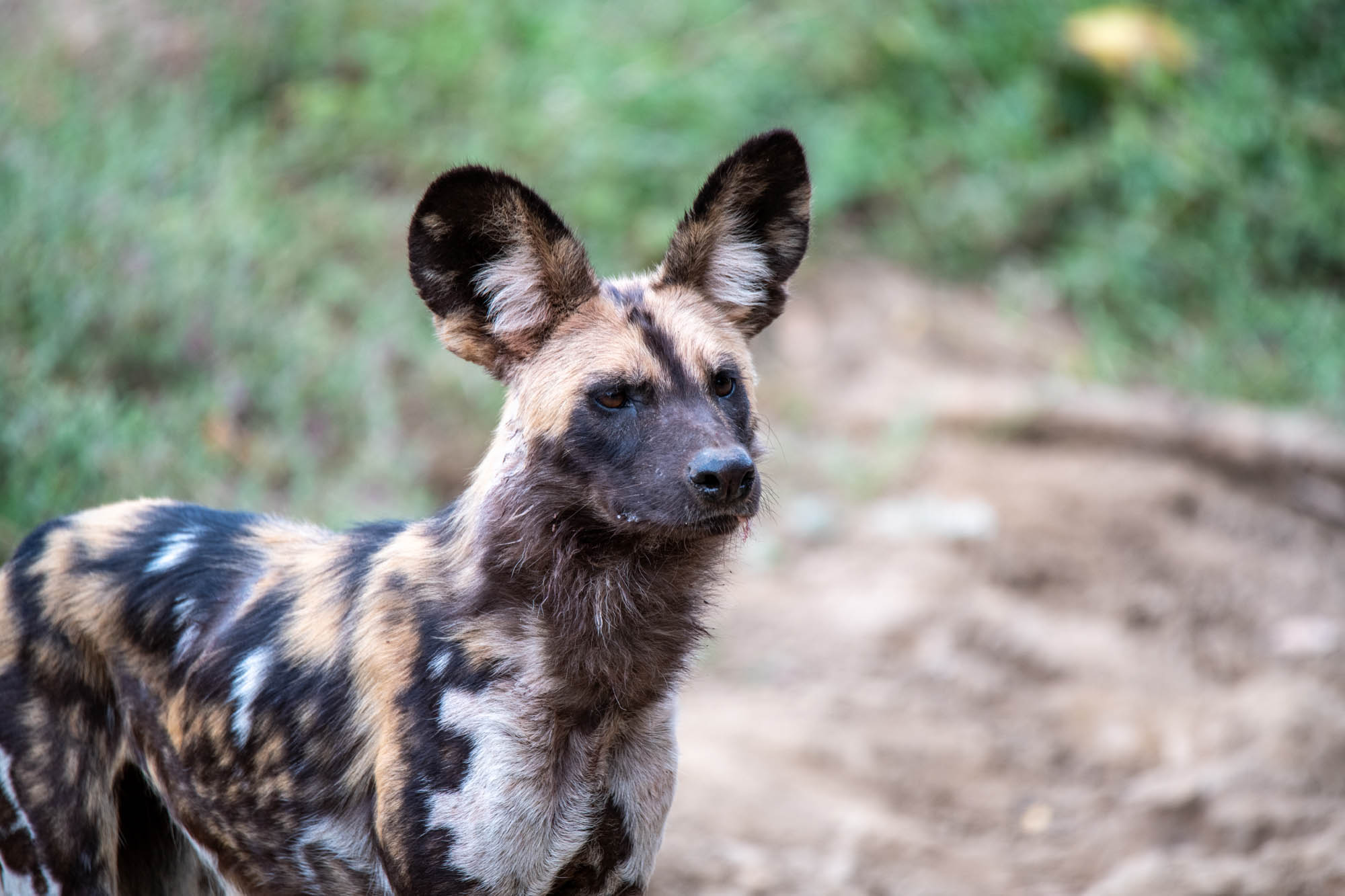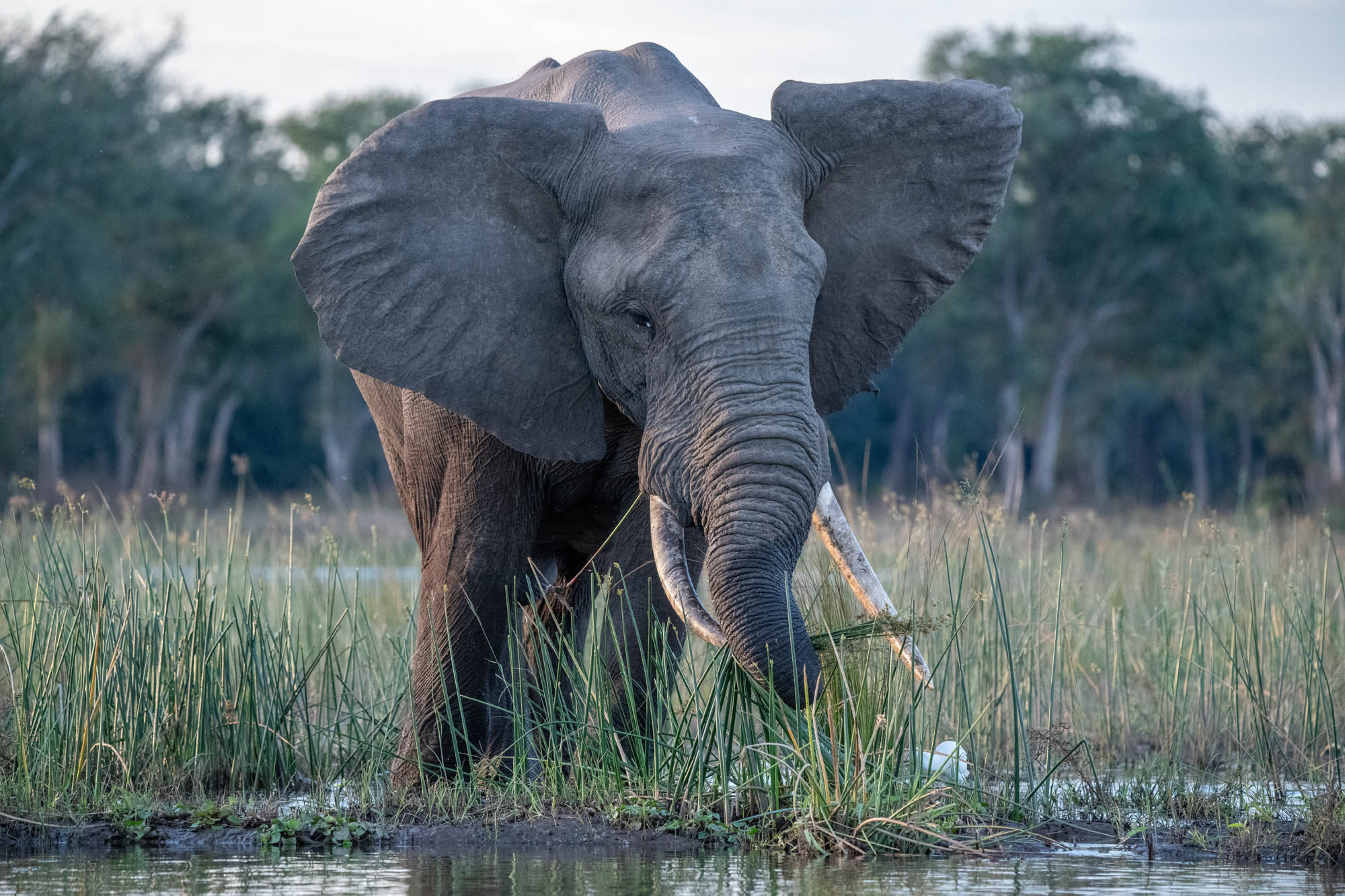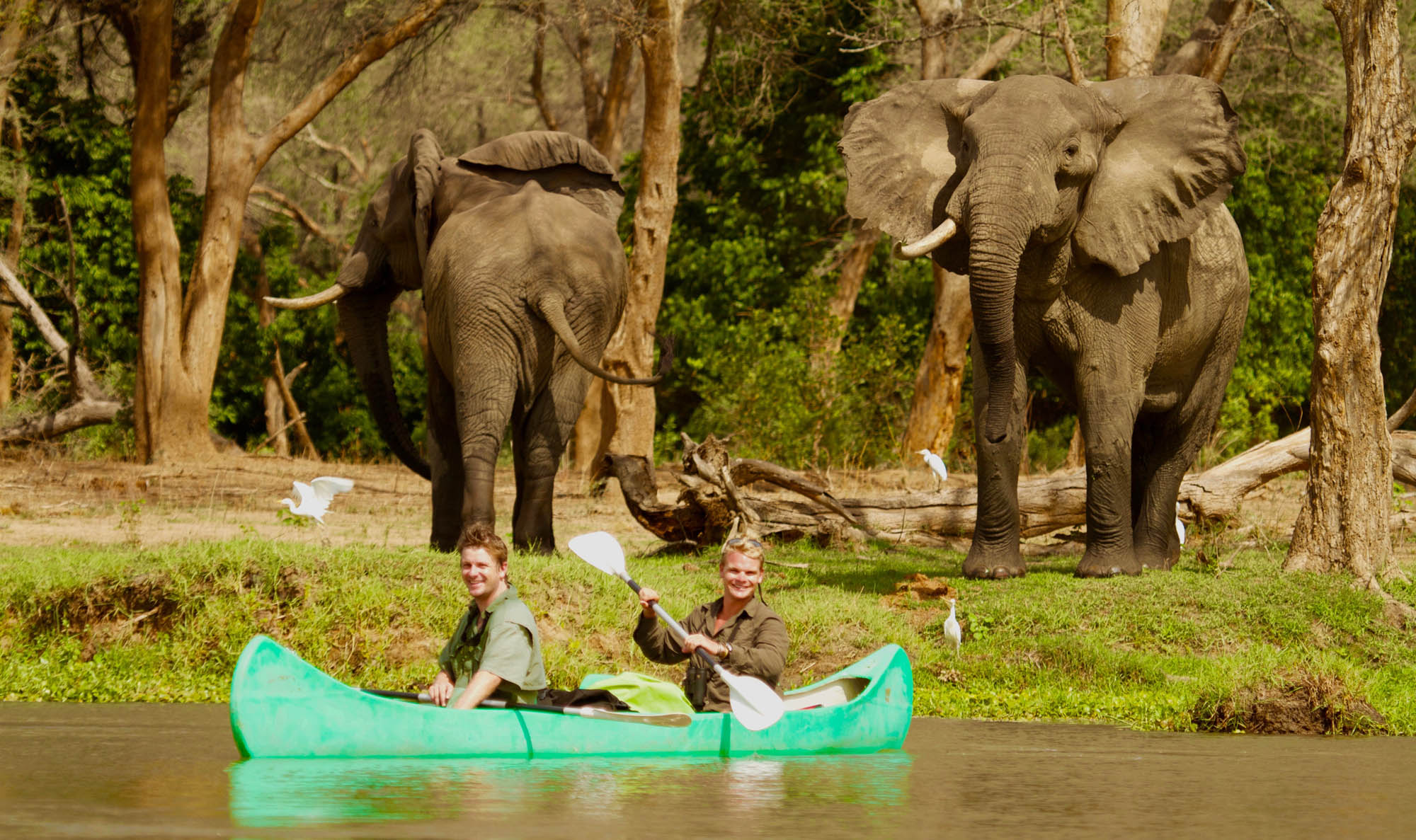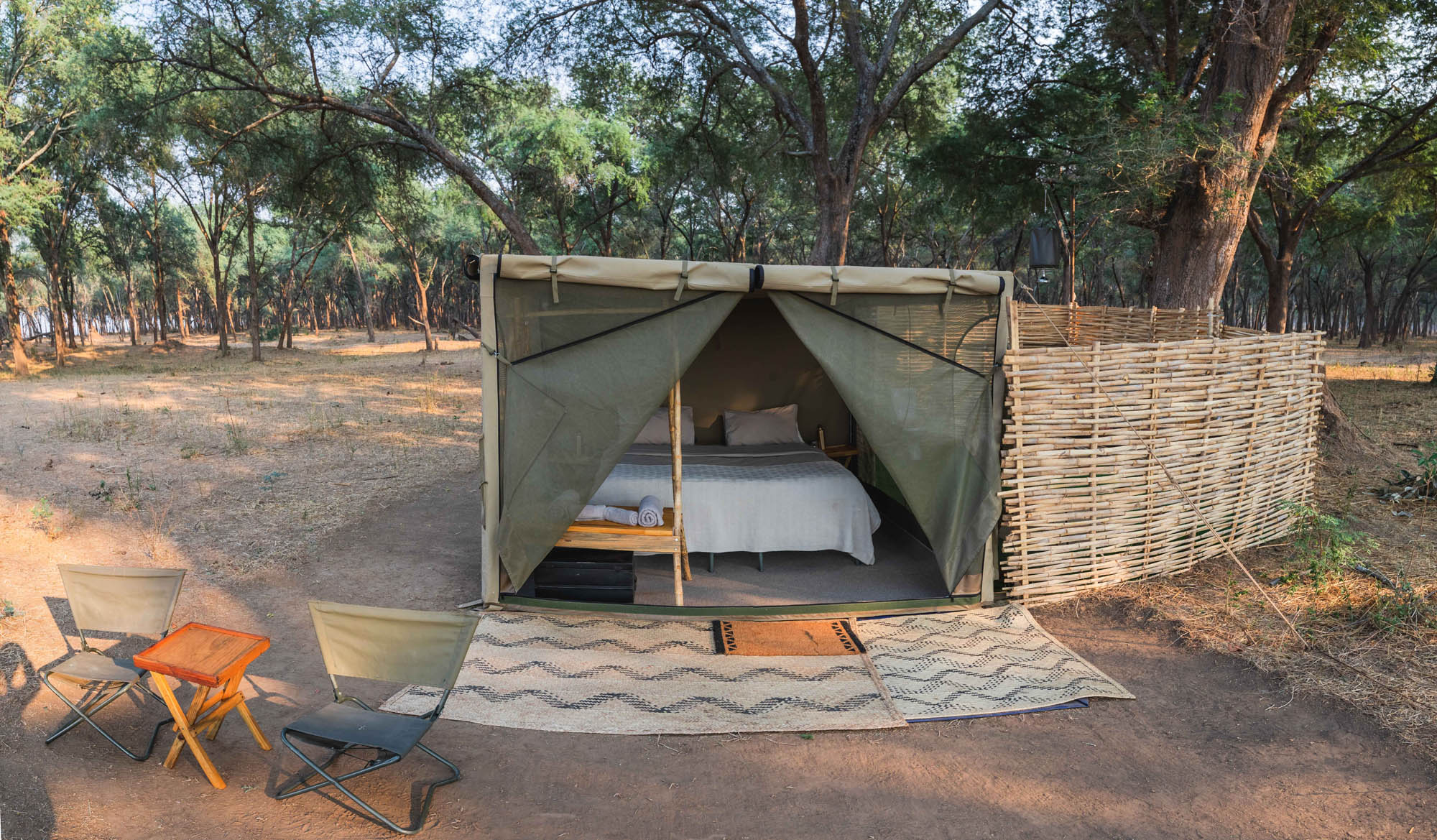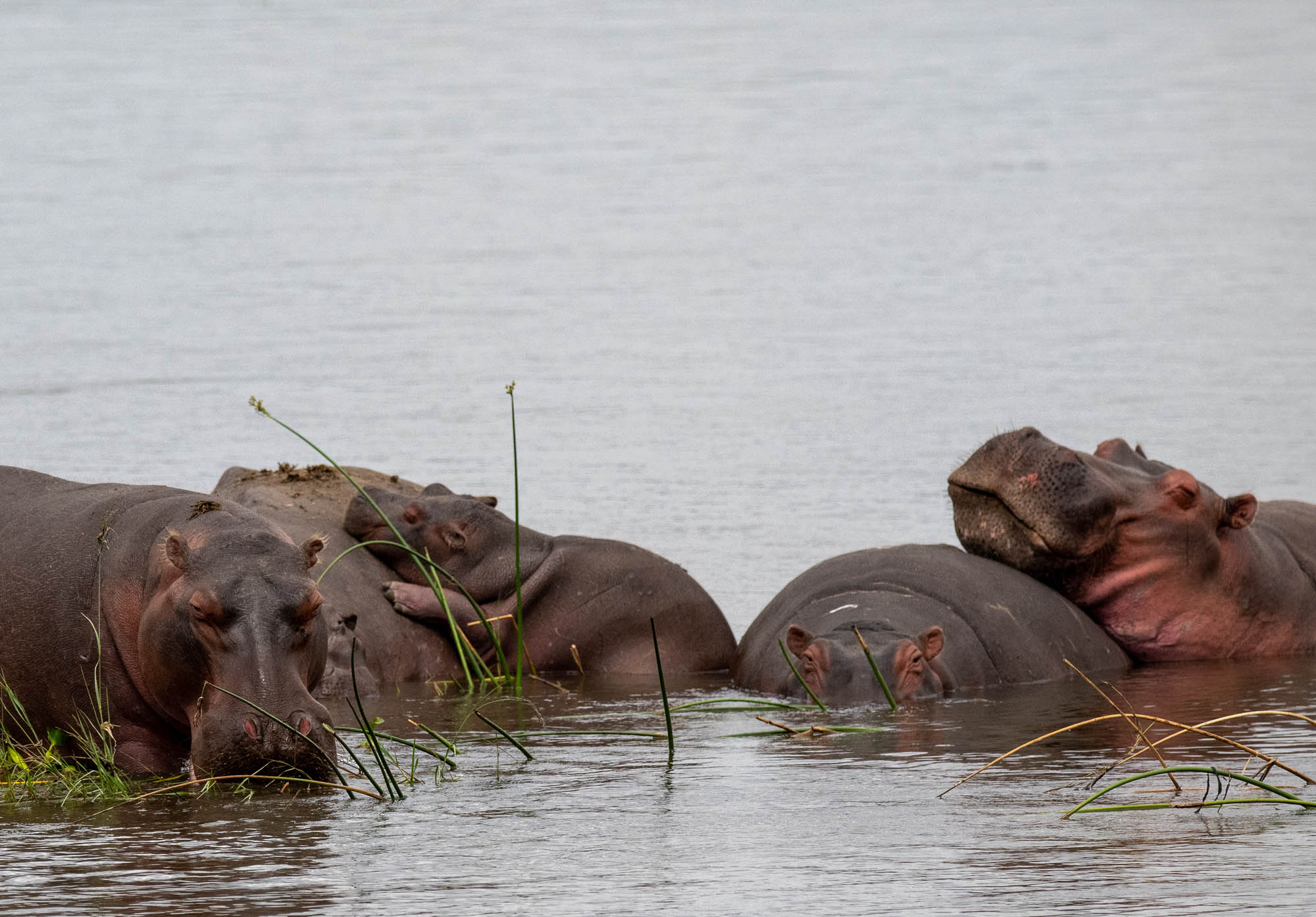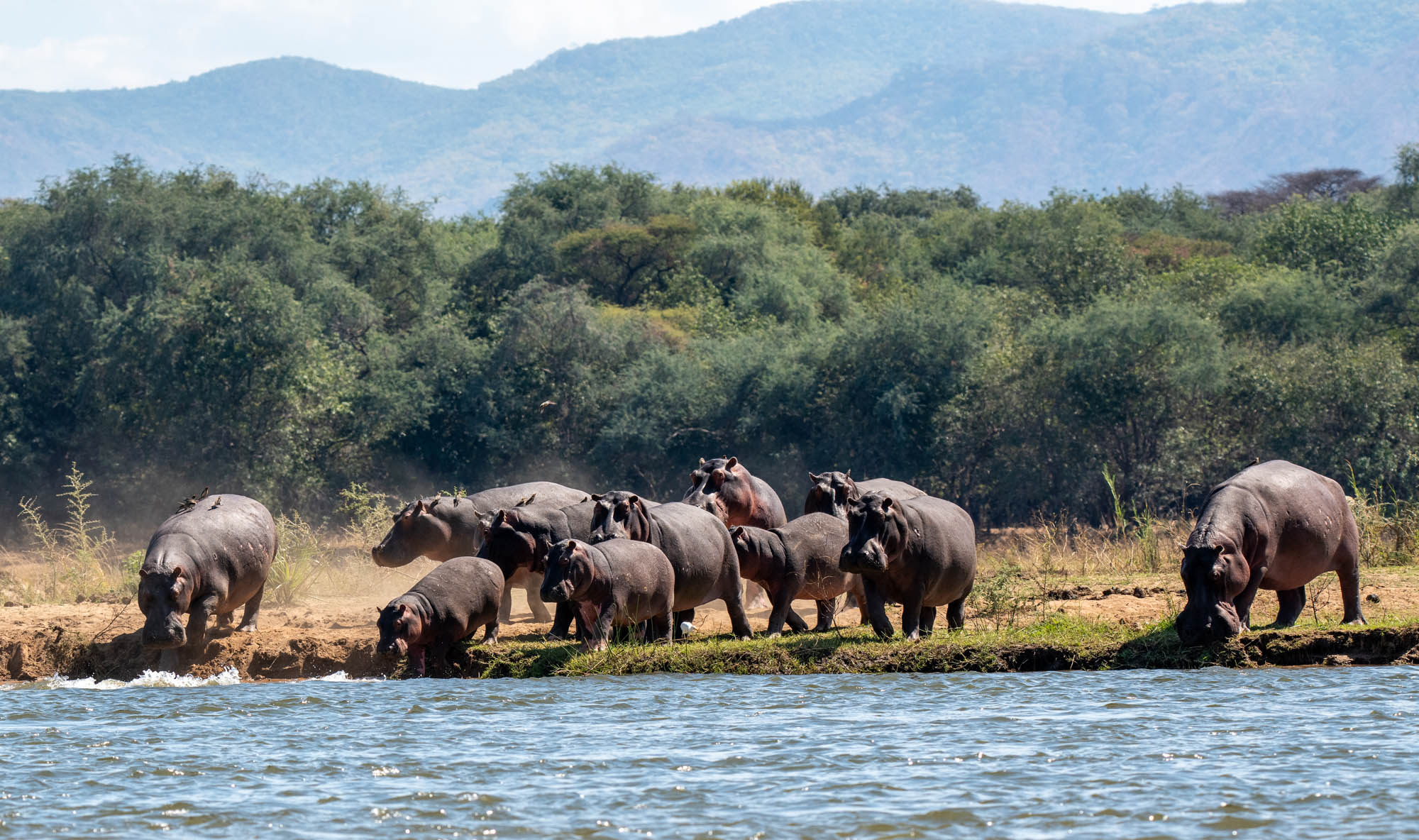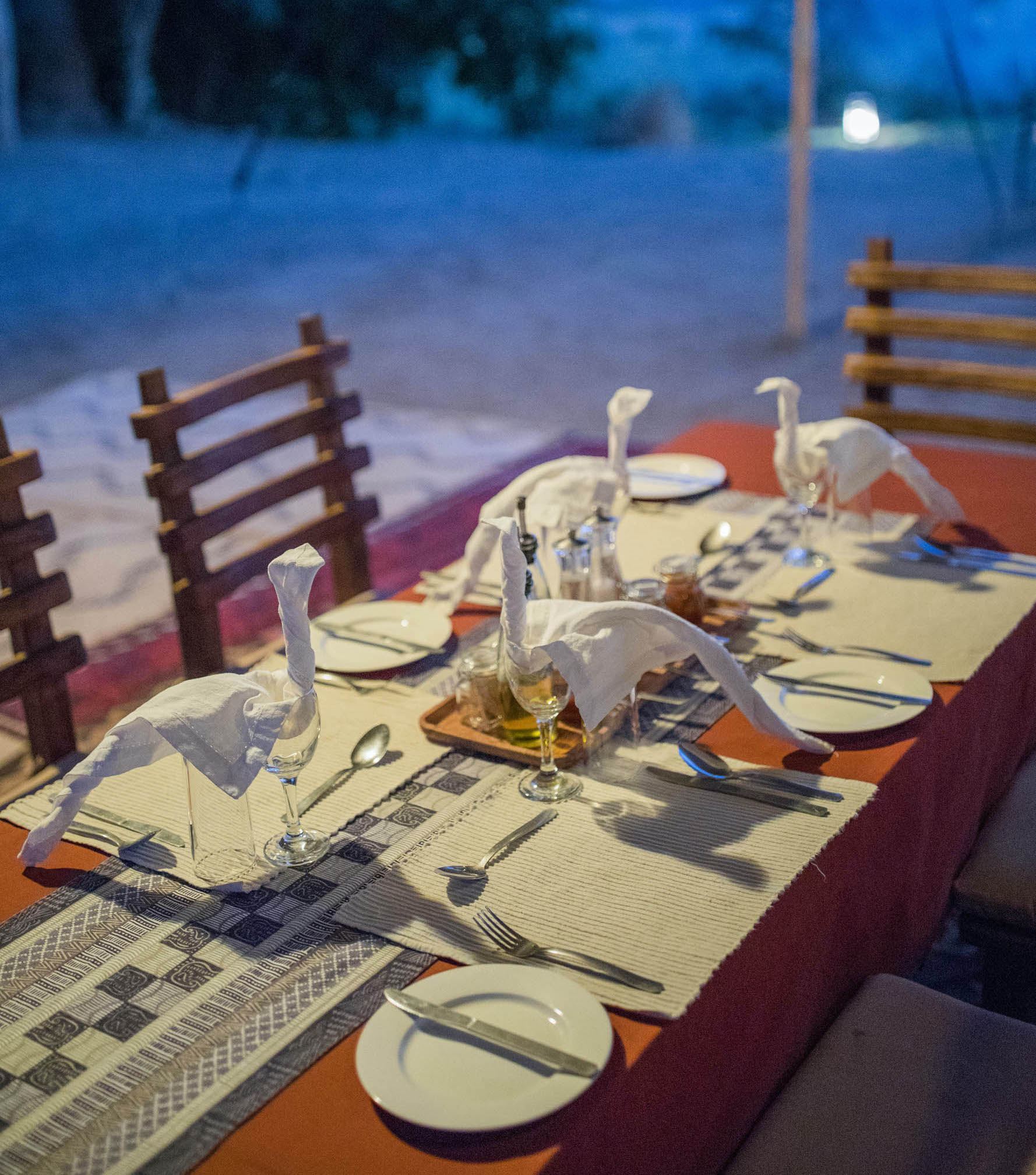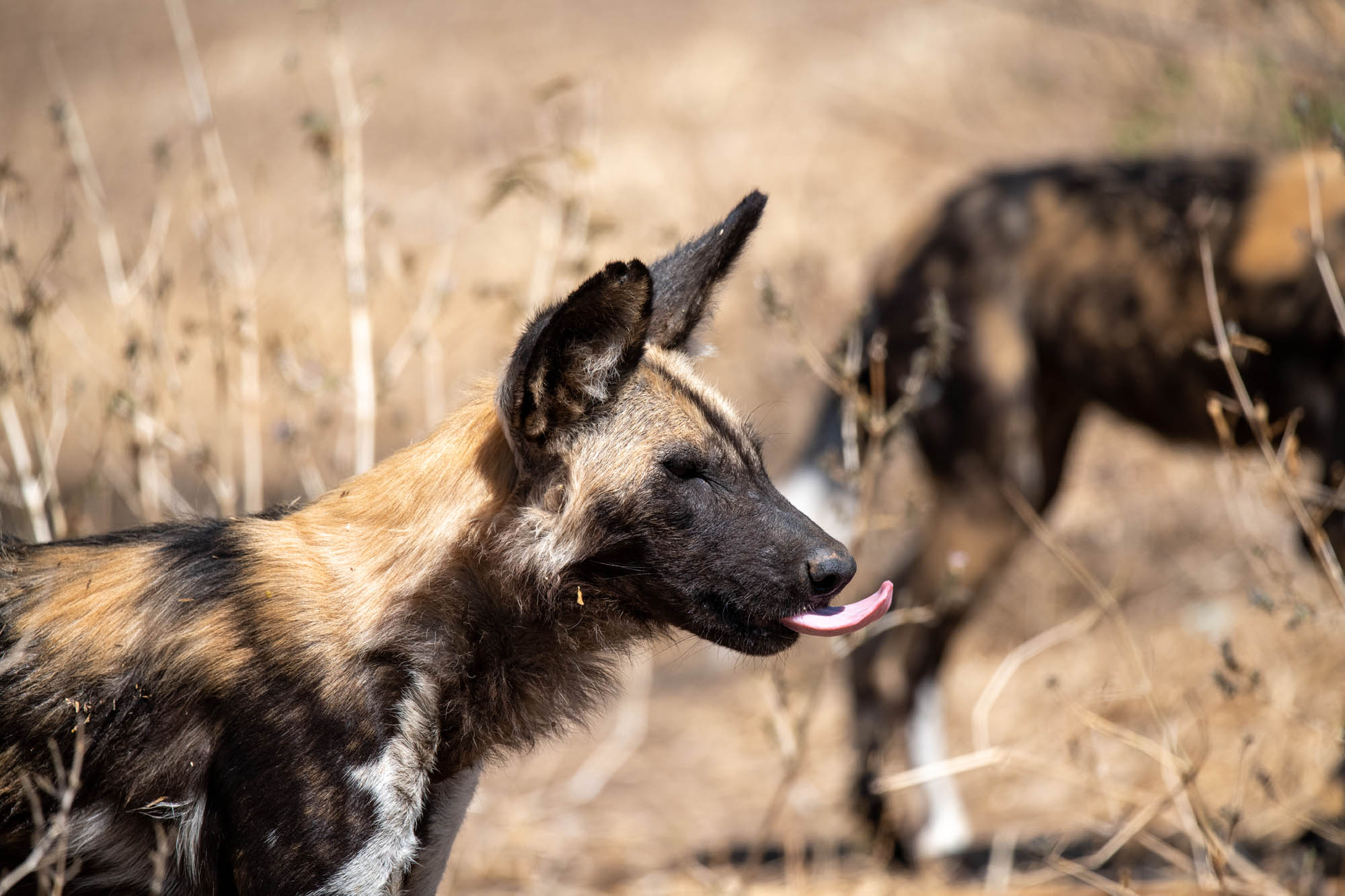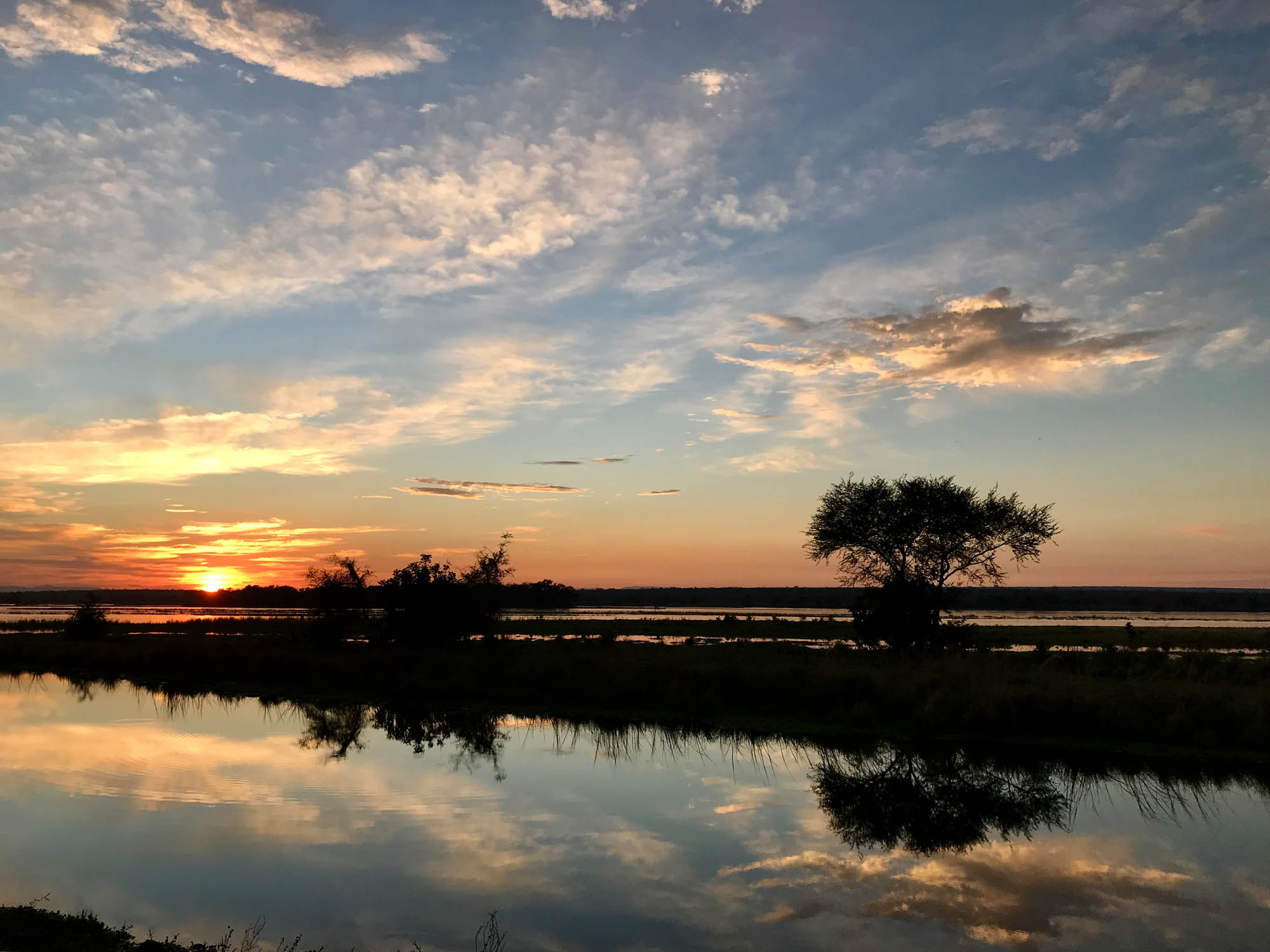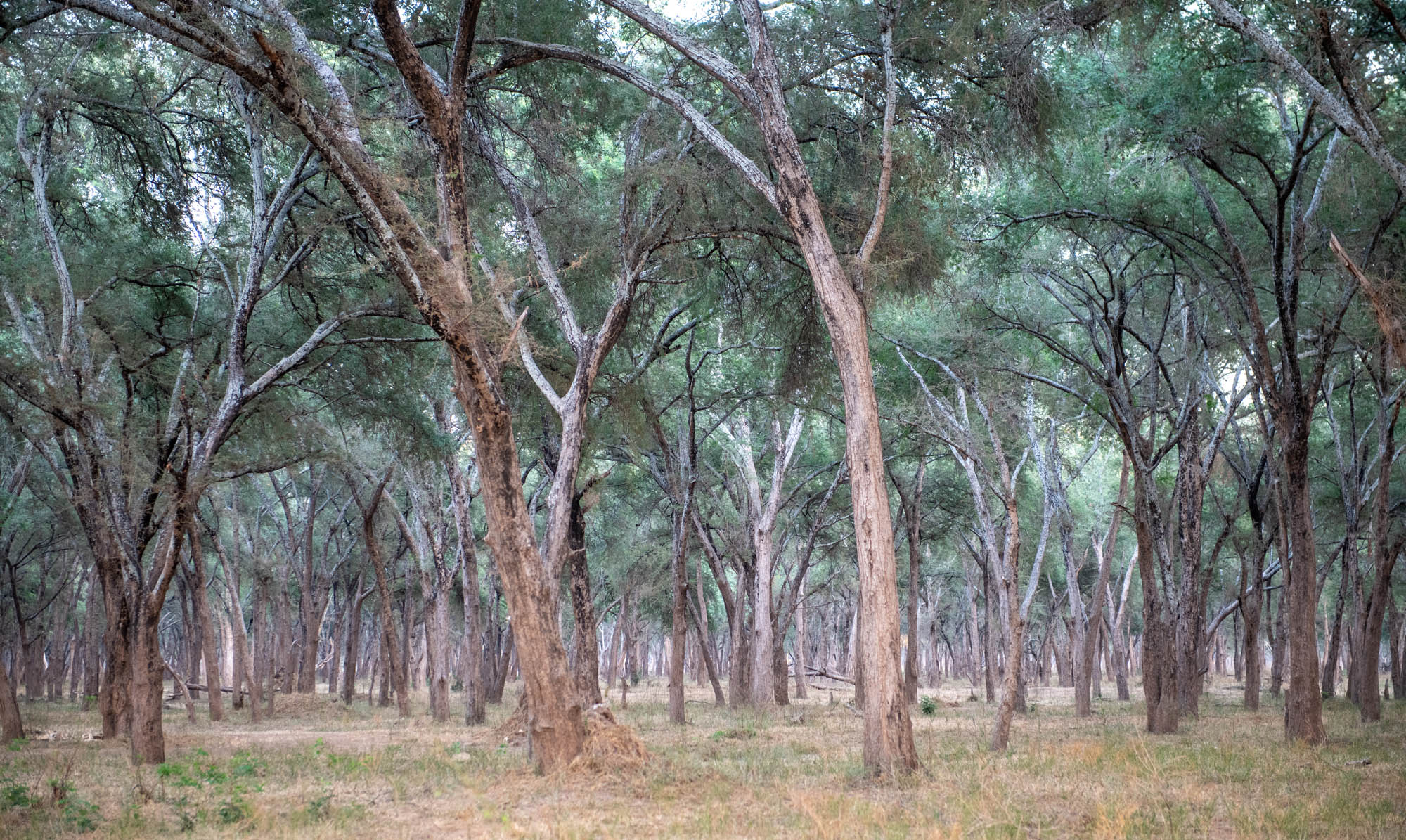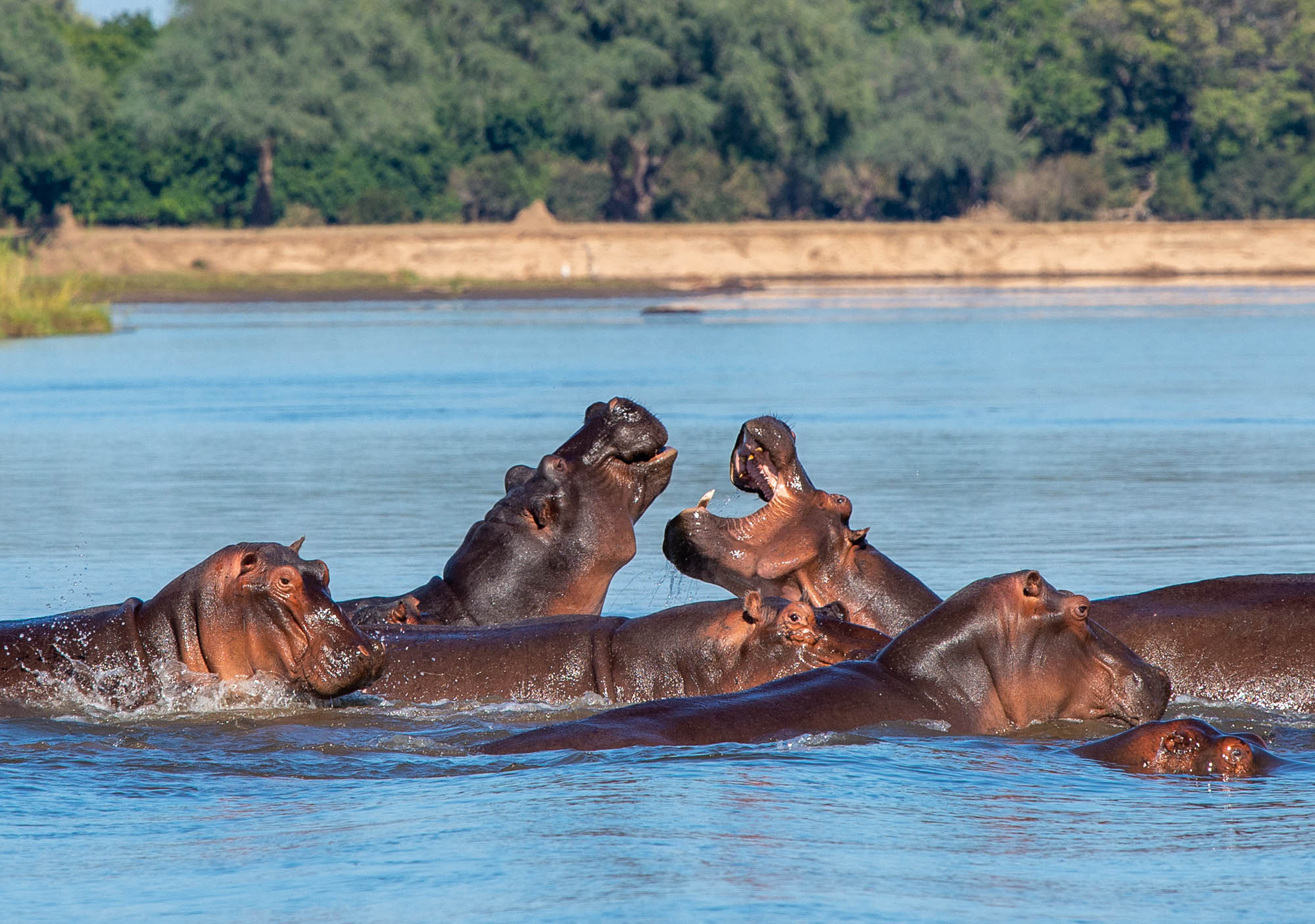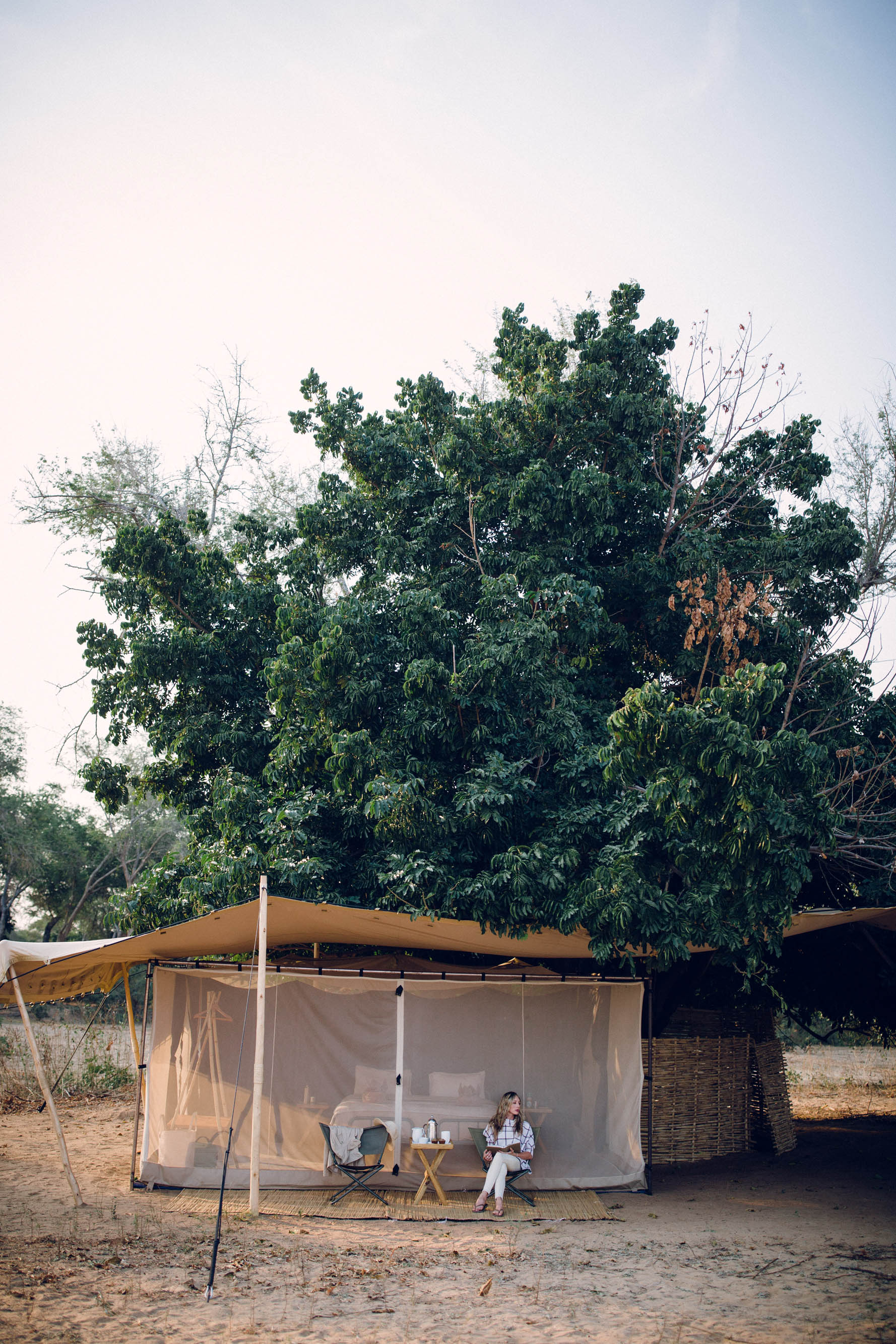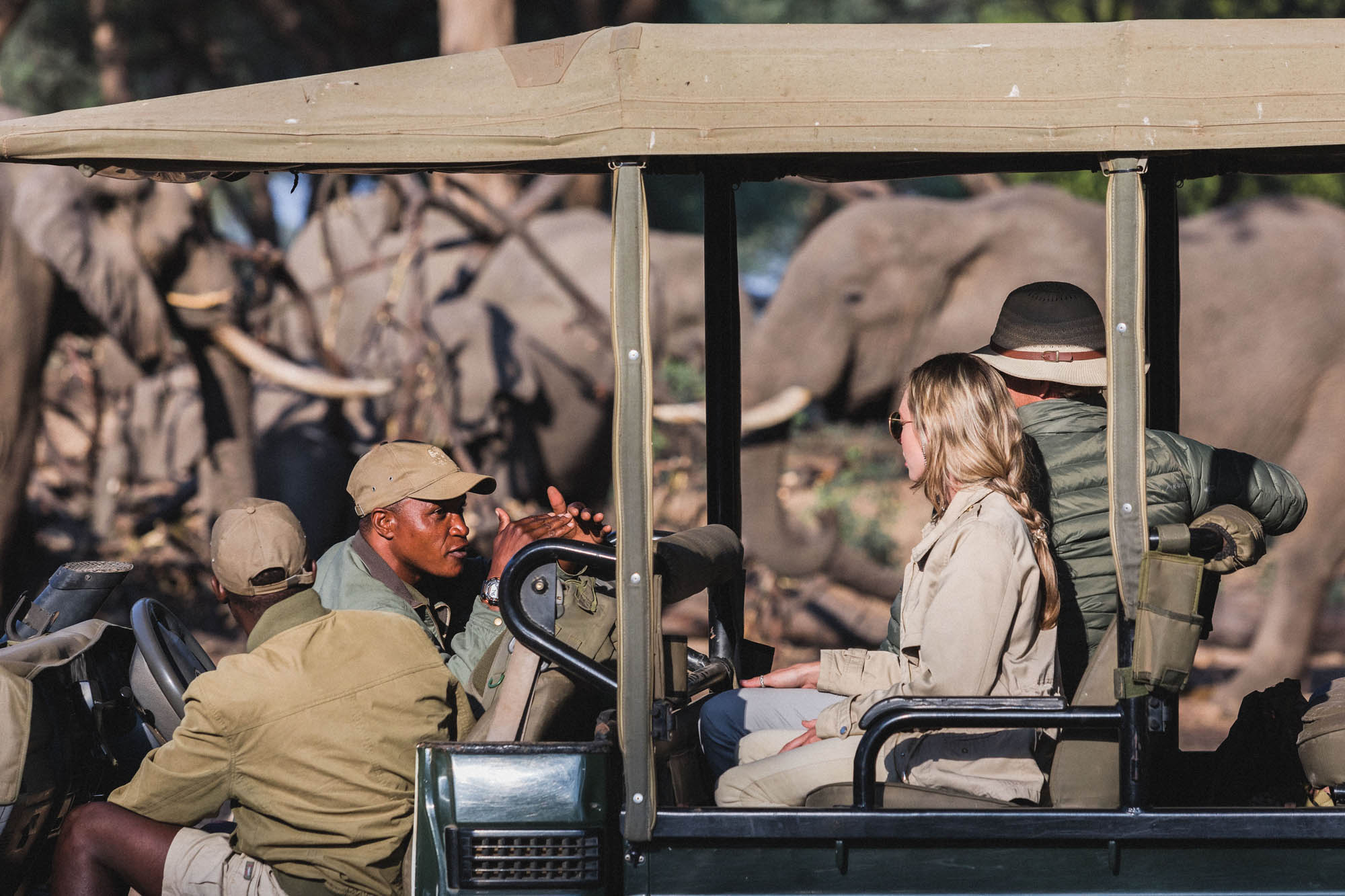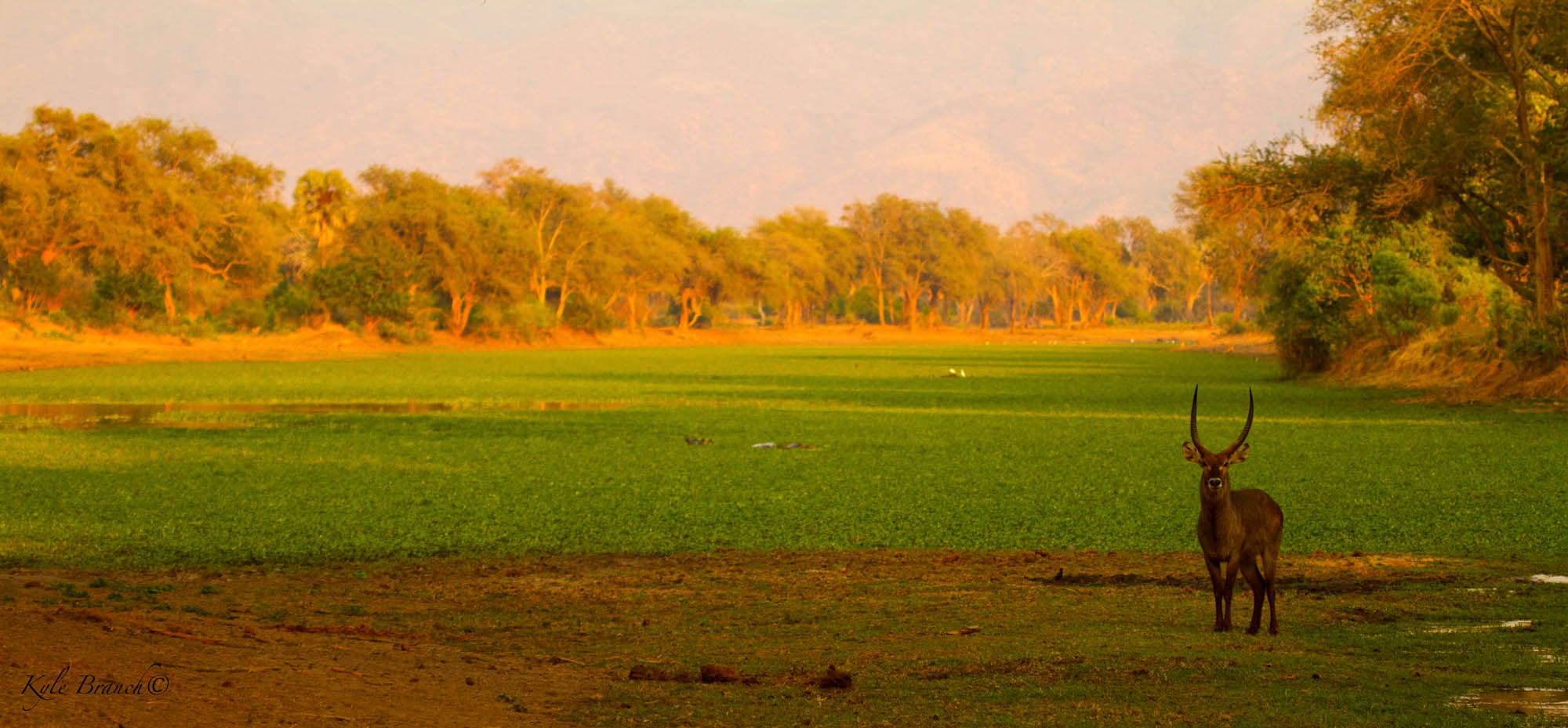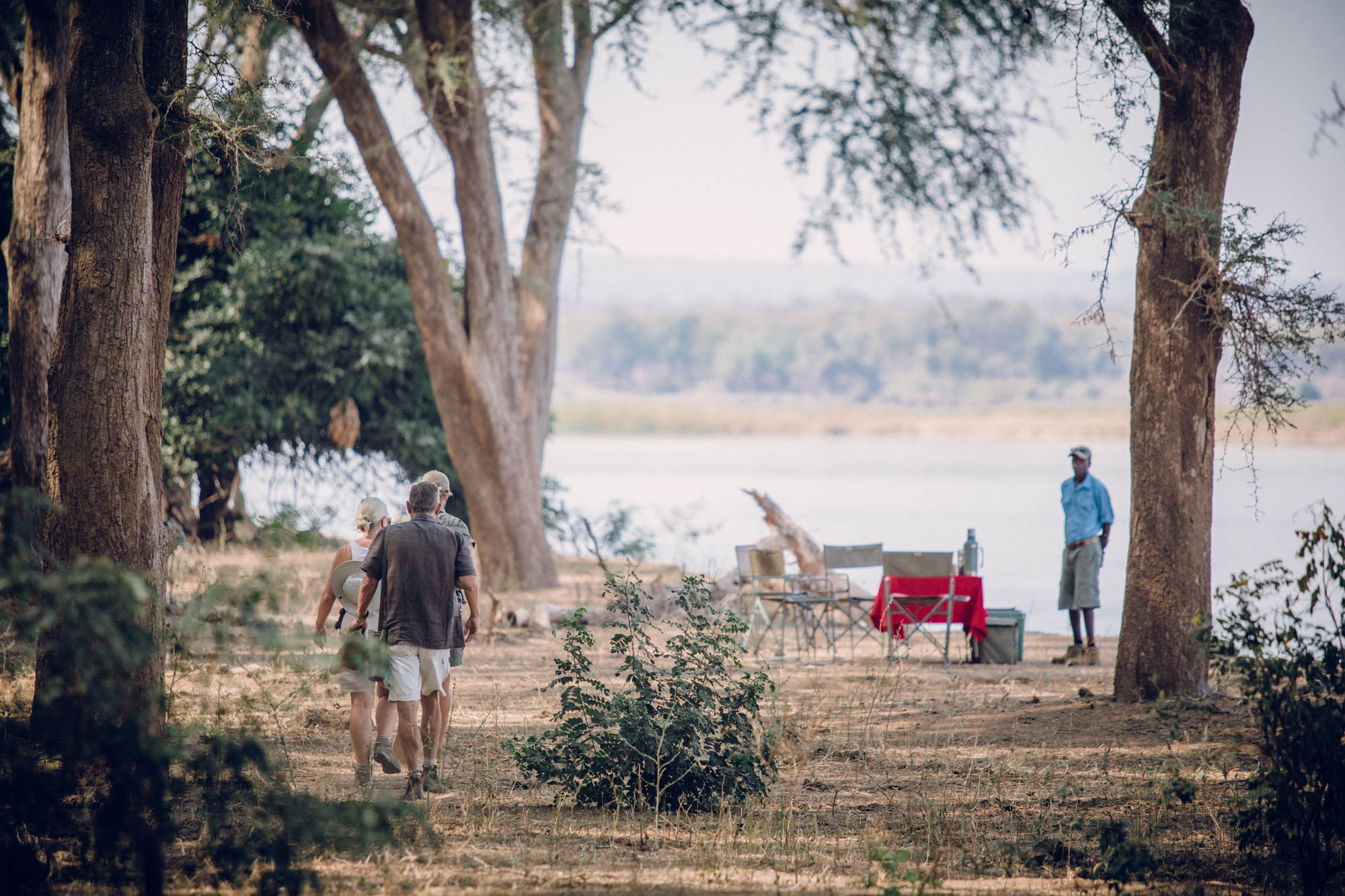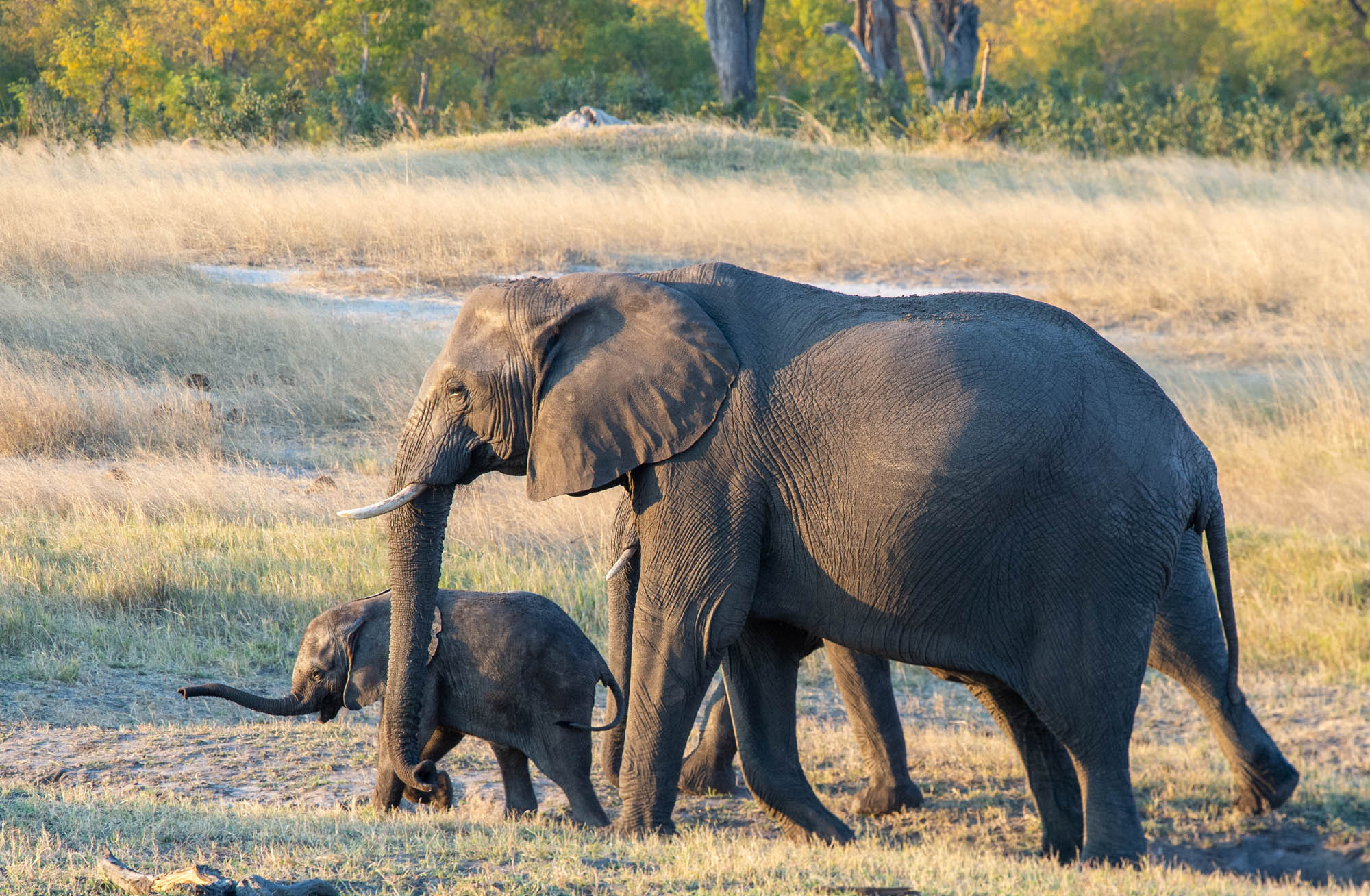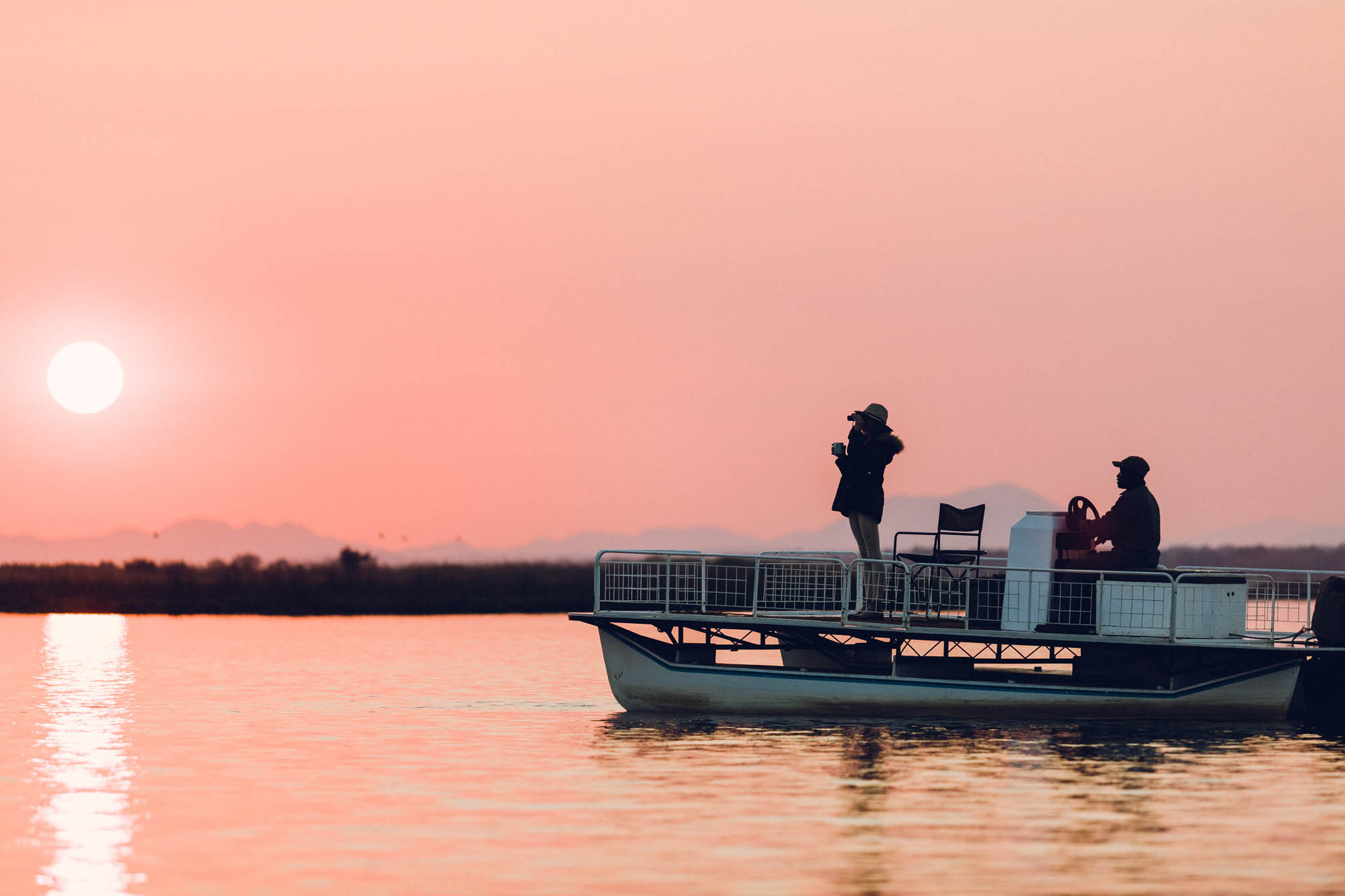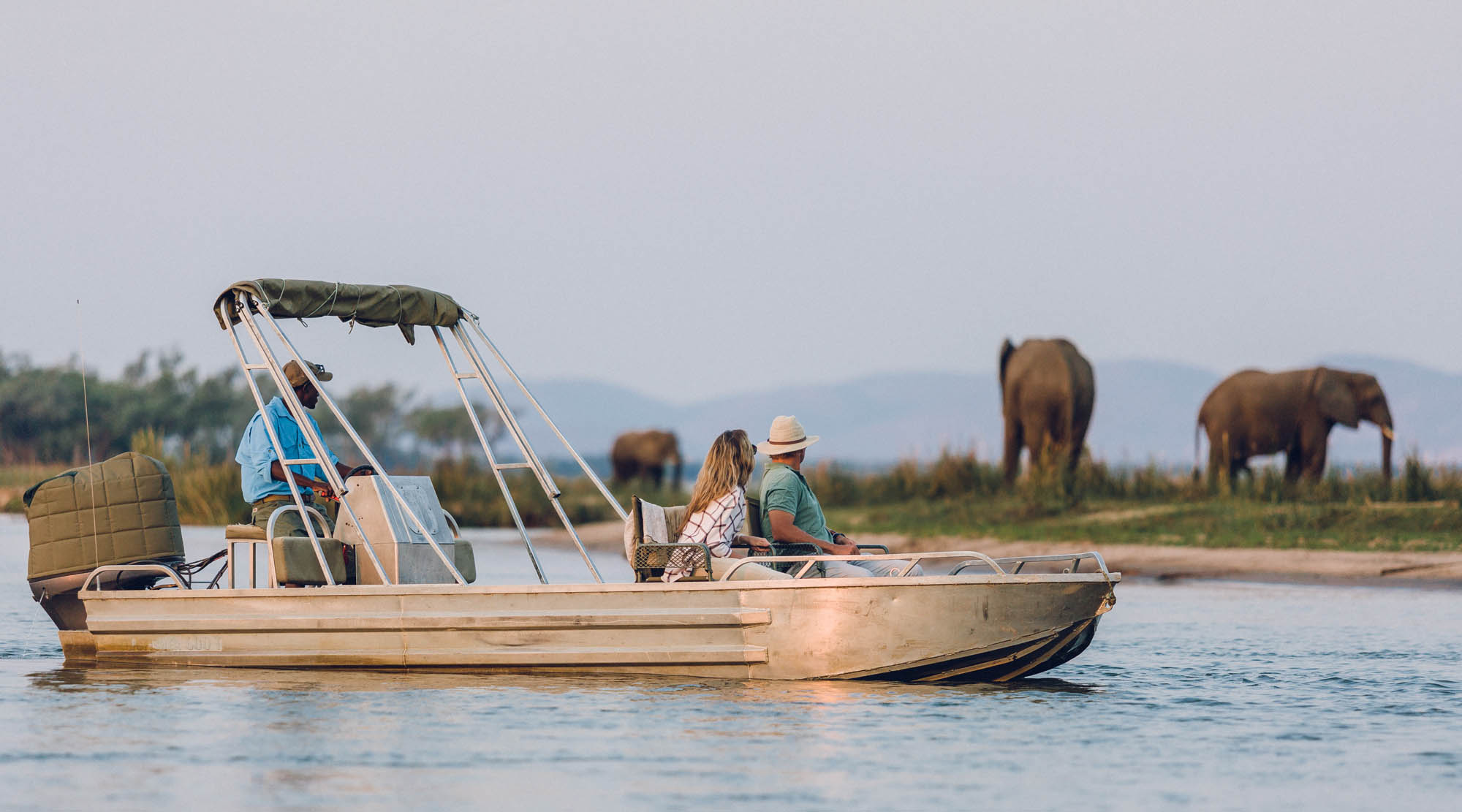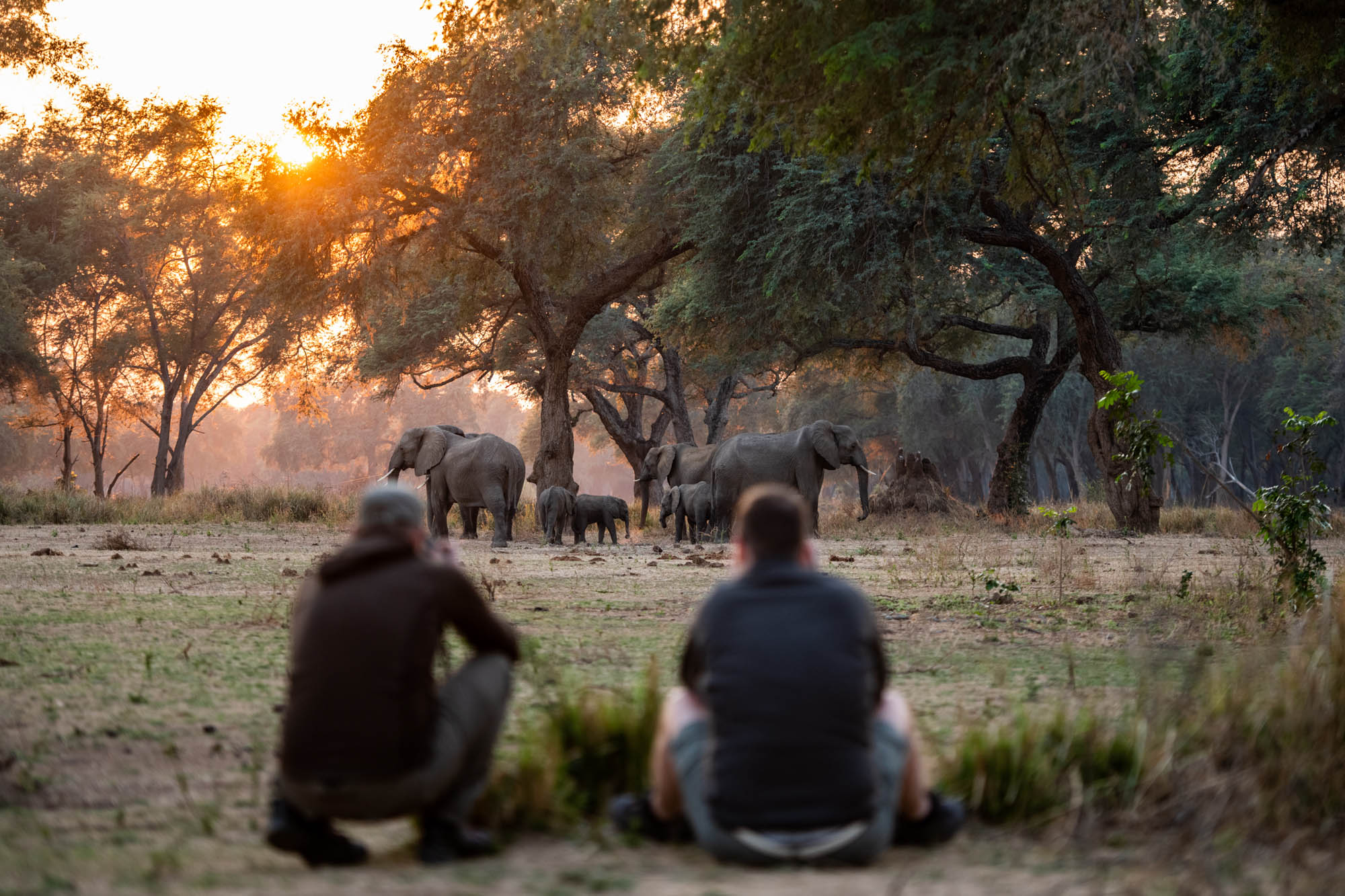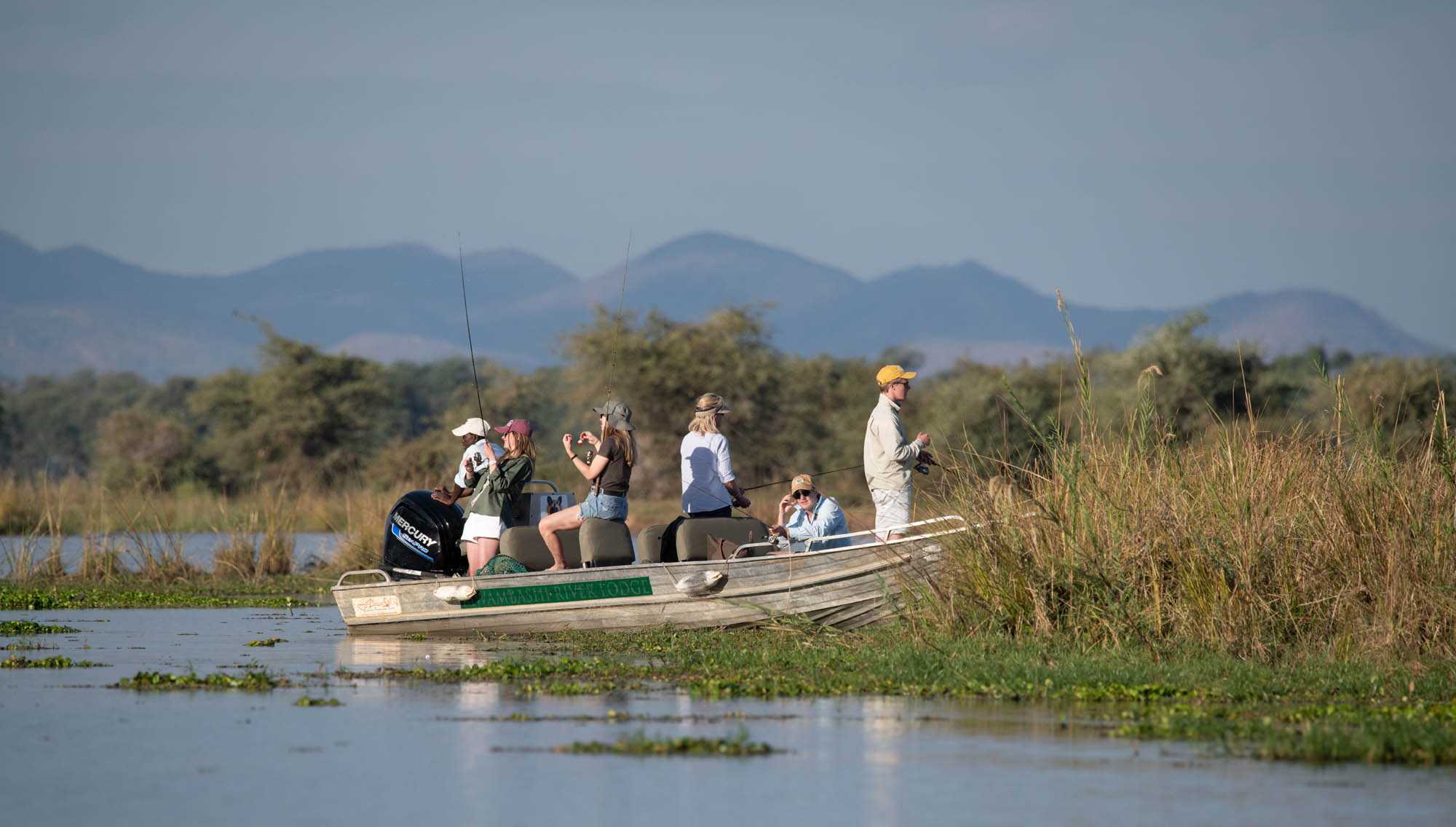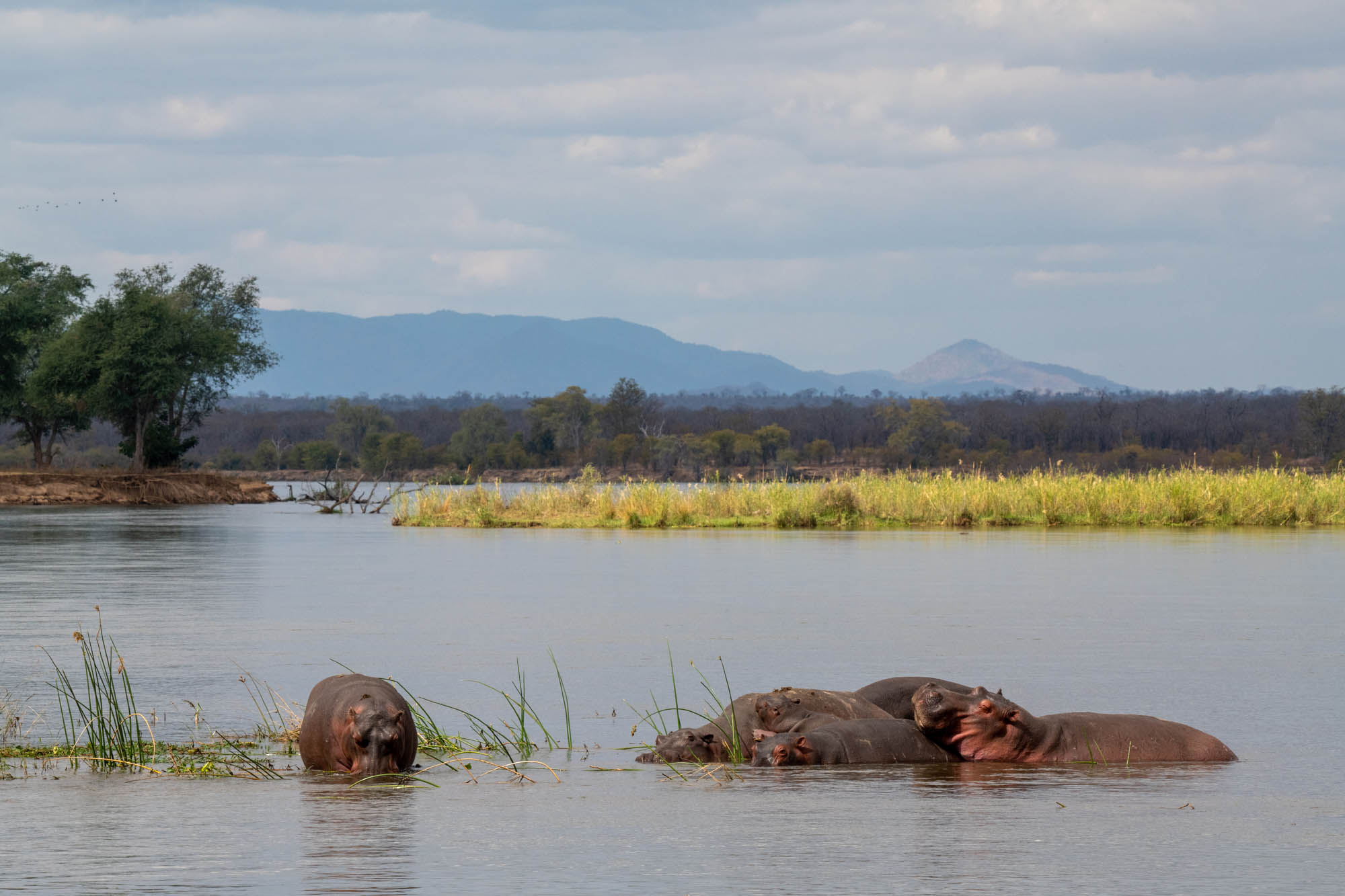Listening to and soaking up the soft gurgling of the Zambezi River at 6.30 am on a cool summer morning last December at Royal Chundu Island Lodge in Zambia was about the best start to a day I’ve had in years. Adding to the sense of serenity and calmness which a setting like that engenders were the naturally soothing sounds of birdcalls. At least five or six different birds made it patently obvious that they liked being there that morning just as much as I did.
Few safari lodges anywhere in Africa look as good during the day as they do at night, when subtle lighting with locally made lanterns and candles can turn even a mediocre spot into a romantic getaway. Not so Royal Chundu. It looked great during the day and simply gorgeous at night. A lasting impression was the complete absence of distracting or otherwise bothering sounds. I heard the water – and the birds. And nothing else. Just the way it should be.

Our first stop at Royal Chundu was at River Lodge which has the most extraordinarily beautiful view over a broad stretch of the Zambezi with Zimbabwe on the other side. The Zambezi may have been at a low flow stage then (early December) but it was still one heck of a river, with a massive expanse of water in front of the lodge. Following our arrival briefing (which included some lovely iced tea and a much appreciated shoulder massage) we set off by boat to Royal Chundu Island Lodge.
With just four elegant – air-conditioned – rooms tucked into a dense stretch of riverine forest, Royal Chundu Island Lodge is a veritable escape from reality. It felt like there was nobody else around and that happened to be the case on the day. We were in that rarest of rare places, our own island paradise. Travel dreams do come true.
A short 10-minute walk took us to a lively picnic spot overlooking a set of rapids in the Zambezi. Just for the two of us the camp had set up what amounted to an adult playground. A picnic table with a couple of hammocks, a covered outdoor grilling and serving area with a well-stocked bar, a pizza oven and a large rug with soft, comfortable cushions. The perfect spot to enjoy a short siesta, the white noise of the Zambezi creating a near irresistible somnolescent effect.
Irresistible also describes the tantalizing array of items for lunch. Chicken pizza, vegetable pizza, freshly grilled Zambezi caught bream. Fillet of beef and grilled chicken. A mixed bean and chickpea salad with carrots, cucumber, sautéed onion, grapes, mango and nuts. We gave it our best shot.
Royal Chundu village visit
There are village visits and there are village visits. The not-so-great ones make you feel like an interloper, an alien checking out a strange new world. The good ones put you at ease right away, usually because of an exceptionally good local guide. We had just such a person show us around – Edith Mushekwa. By dint of her personality and leadership role in the village, Edith made the visit fun and we quickly realized that this village had taken organic gardening to the next level. Their cooperative organic garden, for example, utilizes cow dung, ashes and leaves for soil preparation. No fertilizer or chemicals whatsoever. Crop rotation enables them to maintain soil health and avoid the buildup of pests and diseases associated with specific types of plants.
During our casual stroll through the village, we had a fascinating introduction into the medicinal and commercial use of local trees, such as using the seeds of the mokete tree for oil. The hardwood of the same tree is also used for carving. The village produces a natural dye from the bark of the brown ivory tree. Many of the villagers carve items from redundant pieces of Zimbabwean teak.
On the boat ride back from the village we did a little birding and we we got lucky with several good birds including African skimmer, lesser jacana, pygmy geese, comb duck, African fish eagle, rock pratincole and a close-up display of a black egret ‘tenting’ its wings, a hunting technique.
Our day – or at least the daylight portion of it – ended as peacefully as it had started, drifting along the current of the Zambezi while being pushed by a cool breeze. It was cloudy so ‘sundowner cruise’ may not have been the best description. What it lacked in photo appeal it more than compensated with peace and quiet with not so much as another boat or even the sound of a boat anywhere. By 7 pm we were back at the jetty, ready to resume the eating safari.
A traditional dinner
The chef in charge of the culinary team preparing our traditional tasting menu was Chef Peter and he and his team absolutely bowled us over with the sensational range of flavors, textures, colors and aromas associated with the extensive traditional tasting menu. Relais and Chateaux properties like Royal Chundu are known for their high-quality restaurants and this meal was certainly in the ‘one-of-a-kind’ category.
Right off the bat? A delicate veloute of Kabulangeti beans. The word means ‘small piece of blanket’ and the comfort food connection is not hard to guess. These small brownish beans tasted somewhat like black beans. Delicious.
The second dish was dumplings with a dried fish filling; for the vegetarian in the party the chef had prepared a spinach wrap with mixed vegetable stuffing. Everything prepared from scratch and everything sourced locally.
I skipped the meat and fish offerings but even the most ardent steak lover might have taken a second look at the array of vegetarian options:
- Maize nshima (local version of polenta)
- Millet nshima
- Okra with sweet potato leaves
- Aubergine impwa (‘egg’)
- Spinach and ground nut melange
- Small local beans
- Masembe pudding, the local take on sago pudding
We didn’t finish everything but went to bed happy in the knowledge that none of the buffet items would go to waste.
Breakfast overlooking the Zambezi
Our culinary exploration at Royal Chundu didn’t end with dinner. We jumped right back into it the following morning, starting with an excellent decaf Americano, with a vanilla muffin or milk scone with strawberry preserve on the side. Your choice. Not to forget the locally-made peanut butter and orange marmalade with freshly made toast. Just like at dinner, all the fresh vegetables and herbs used in the preparation of the meal were supplied by neighboring villages or regional farms.
We really didn’t know where to start – or end – with so many choices:
- A fresh fruit platter with delectable watermelon, pineapple and mango
- Choice of two types of creamy traditional porridge or oats, served with wild honey & toasted ground nuts
- French toast or flapjacks
- A traditional breakfast with eggs, bacon, tomatoes and mushrooms
- Eggs Benedict
- Eggs Florentine
- A 3 egg omelette
A true community-run lodge
During an all too short site inspection at Royal Chundu River Lodge, general manager Aggie Banda filled us in on the remarkable manner in which the lodge – literally from day one when it opened in 2010 – has been community-run. Practically the entire Royal Chundu team are Zambians, including the managers. And most of the team members live in two nearby villages – Malambo and Muluka. Royal Chundu is a community-run lodge in the full sense of the word. The lodge provides training to the community, it sources its food from Zambia (mostly supplied by local fishermen and village gardens) and it supports the village gardeners through a Seed Project.
To the extent possible, Royal Chundu looks to its own sphere for suppliers – such as seamstress work for their chitenge uniforms, cushion covers, doormats and dish covers; woodwork for their wooden doorbells; and artwork on the walls. The Royal Chundu staff have created spin-off businesses from the lodge, such as transfer services for guests as well as courier services delivering firewood and fertilizer.
Zambia in 2025 and 2026
Our short visit to Royal Chundu, which is of course on the Zambia side of the Zambezi River, reminded us that we may have been neglecting Zambia – as a safari destination – over the last few years.
There are safari destinations which attract hundreds of thousands of visitors annually like Kenya, Tanzania and South Africa. And then there’s Zambia in central Southern Africa which attracts a relative handful, by comparison.
Zambia is a large Southern Africa country (about the size of Texas) with every bit as much diversity as Kenya or South Africa. Which says a lot. It offers a multitude of activities, scenic highlights, wildlife viewing opportunities and cultural interaction. With several new and exciting safari options in the offing for the 2025 and 2026 seasons, we will definitely be paying closer attention to Zambia. So if you ask us for a Botswana itinerary suggestion you’ll get it, but you may get a Zambia one as well!
Our Fish Eagle Safaris team have visited Zambia regularly over the years, and we’re ready to answer any questions you may have and to suggest a couple of Zambia safari itineraries. Perhaps in combination with one or more other areas in Southern or East Africa. Please leave a message at 713-467-5222 and someone will get back to you right away, or email Bert at bert@fisheaglesafaris.com.


